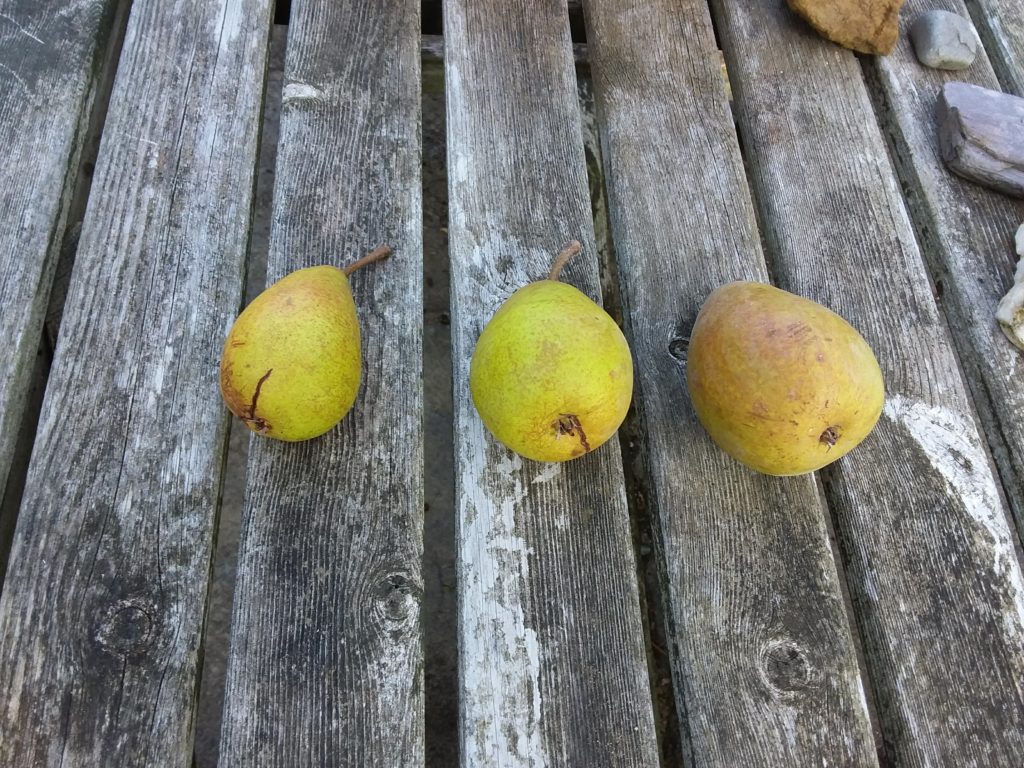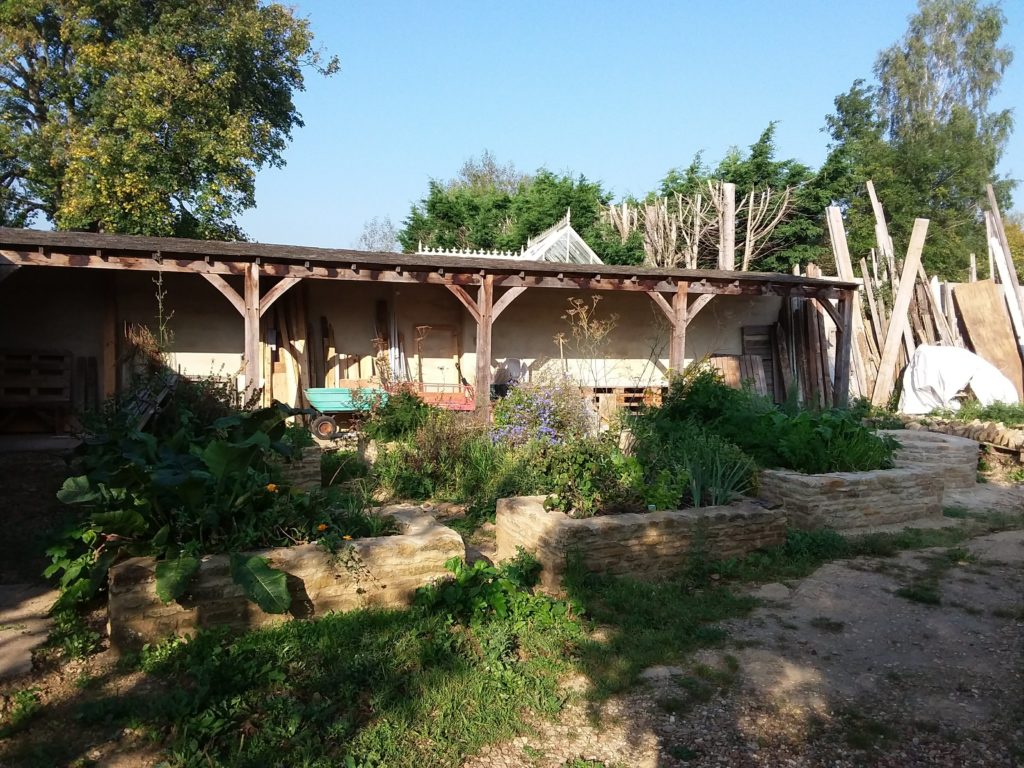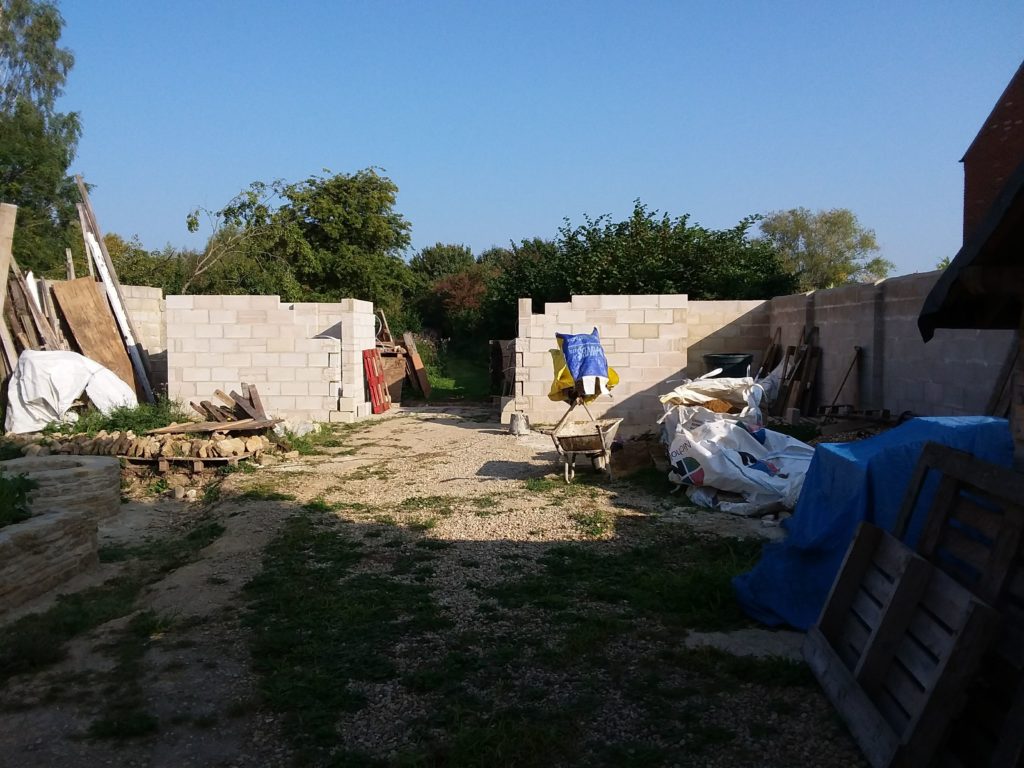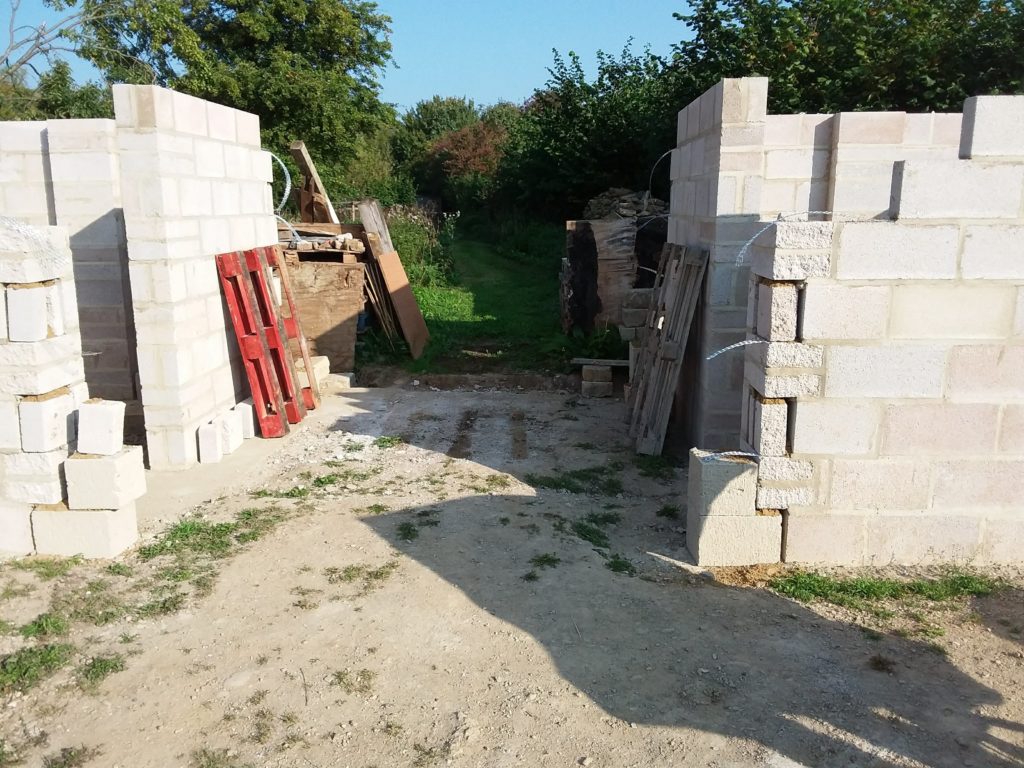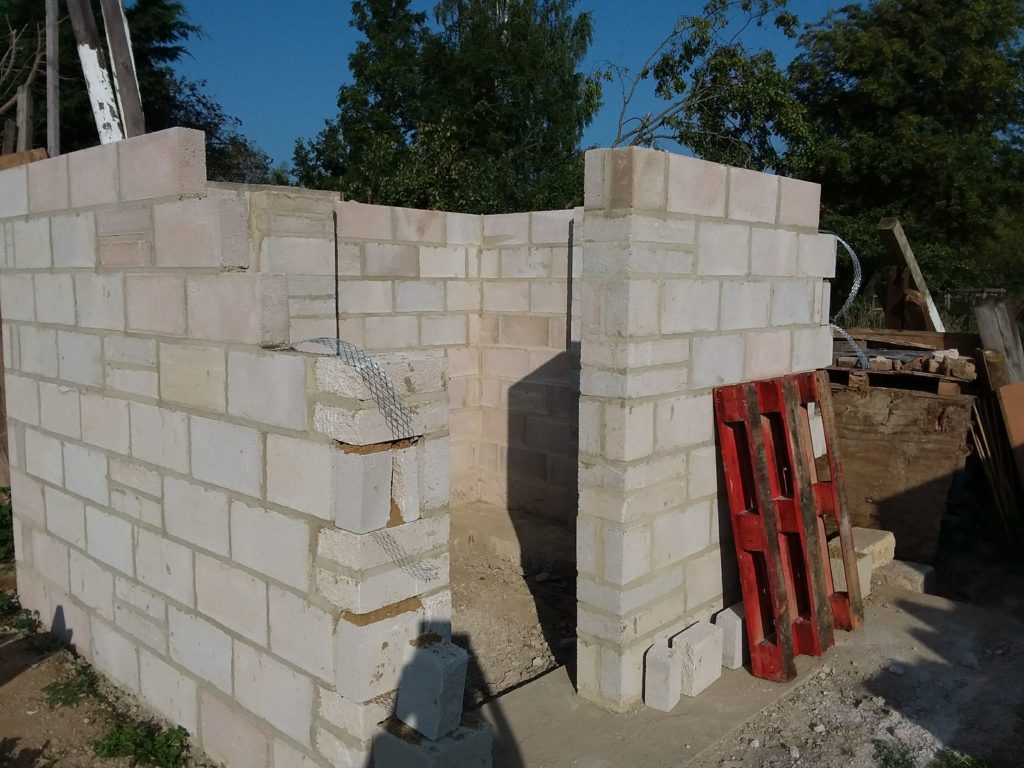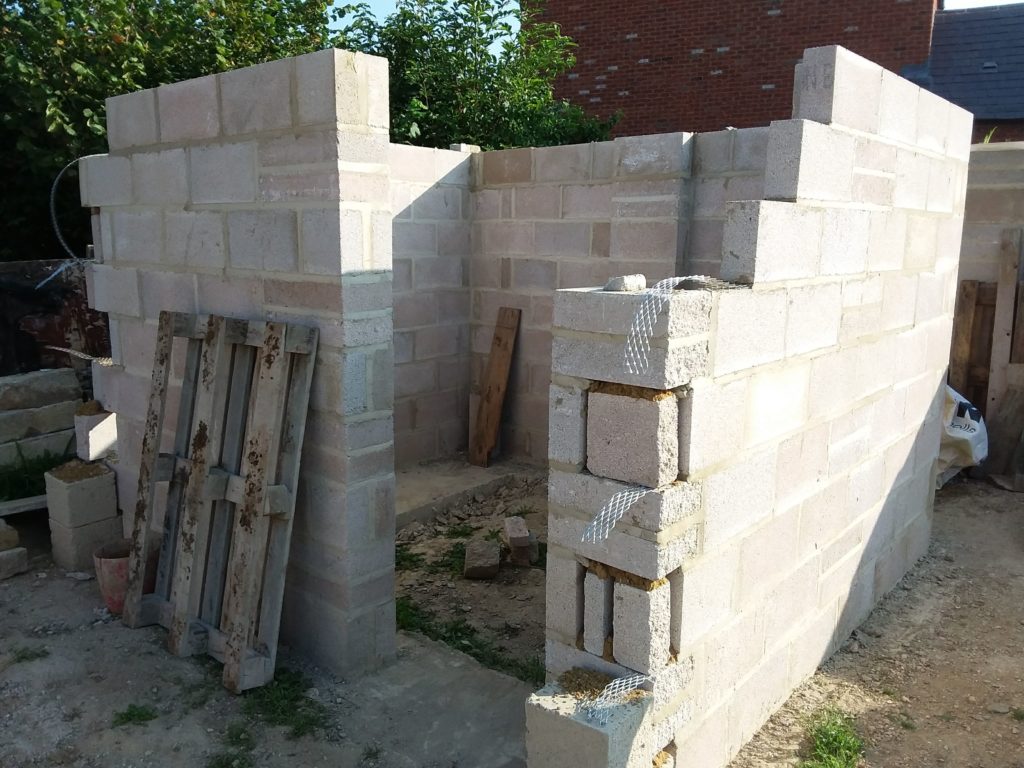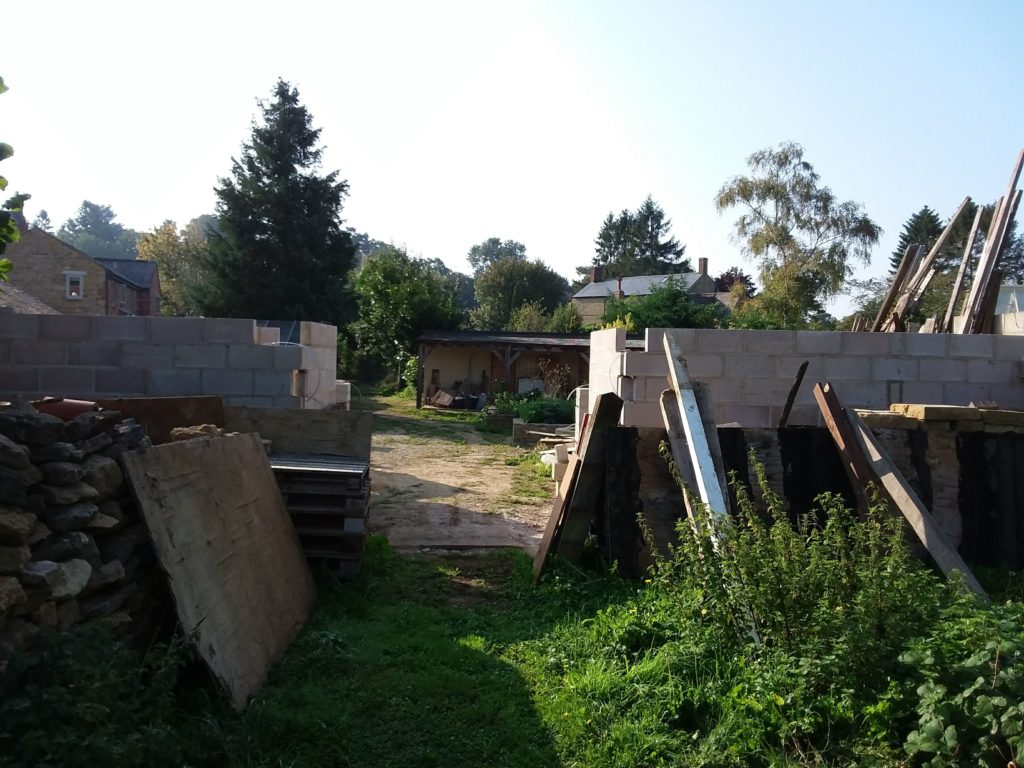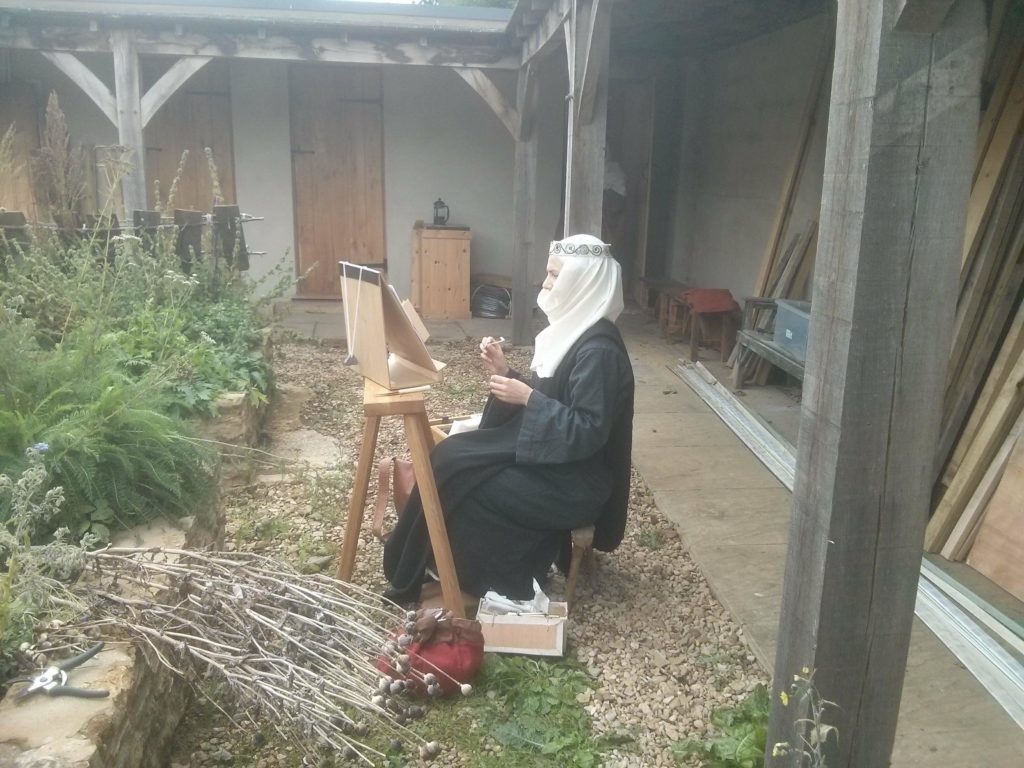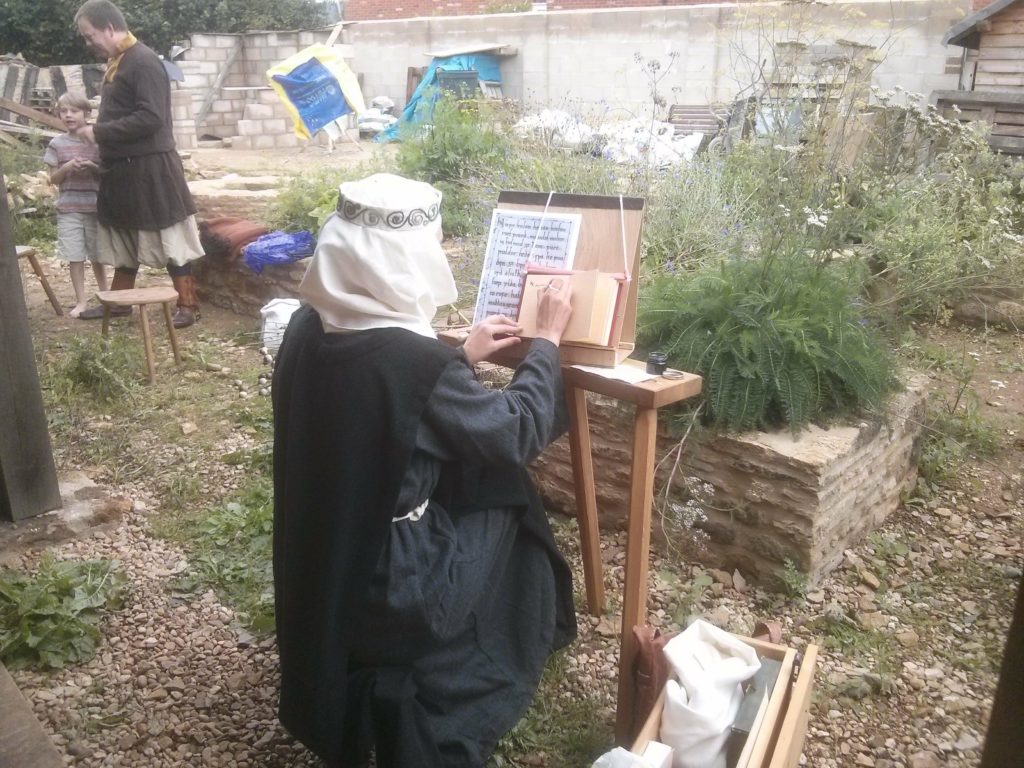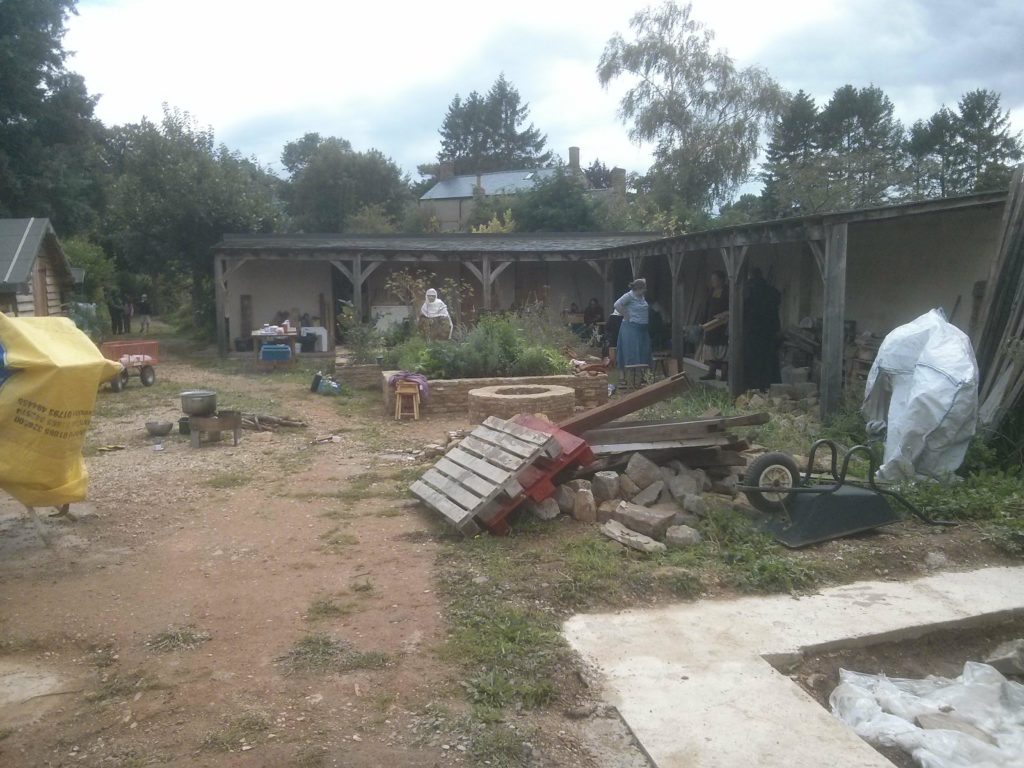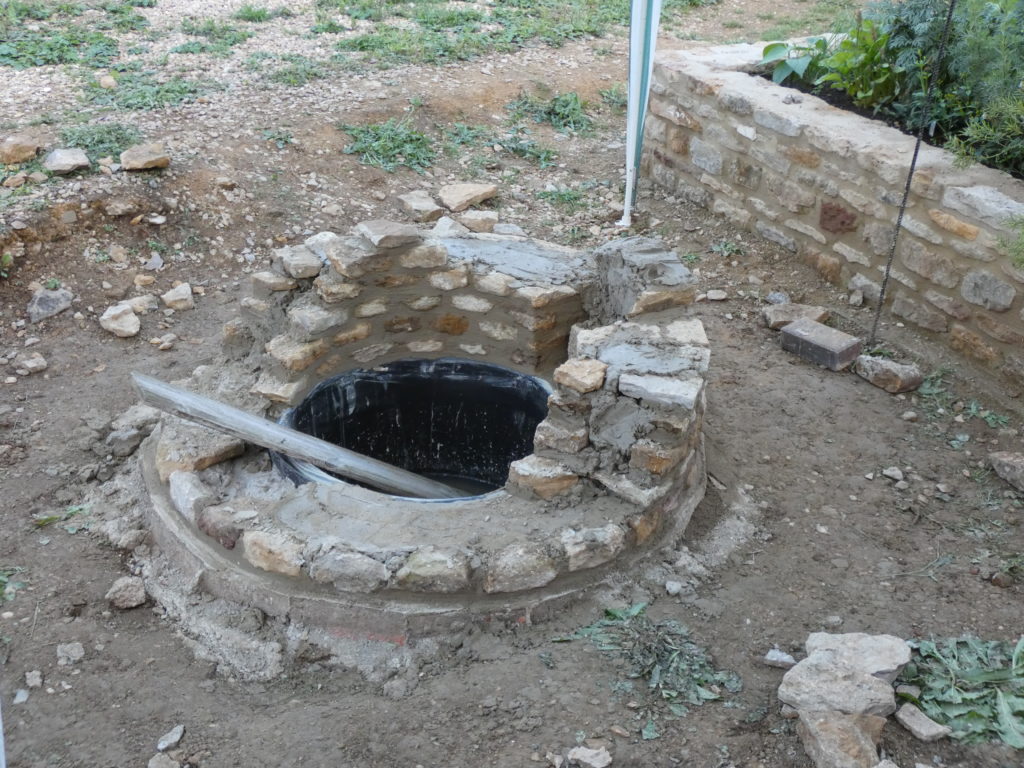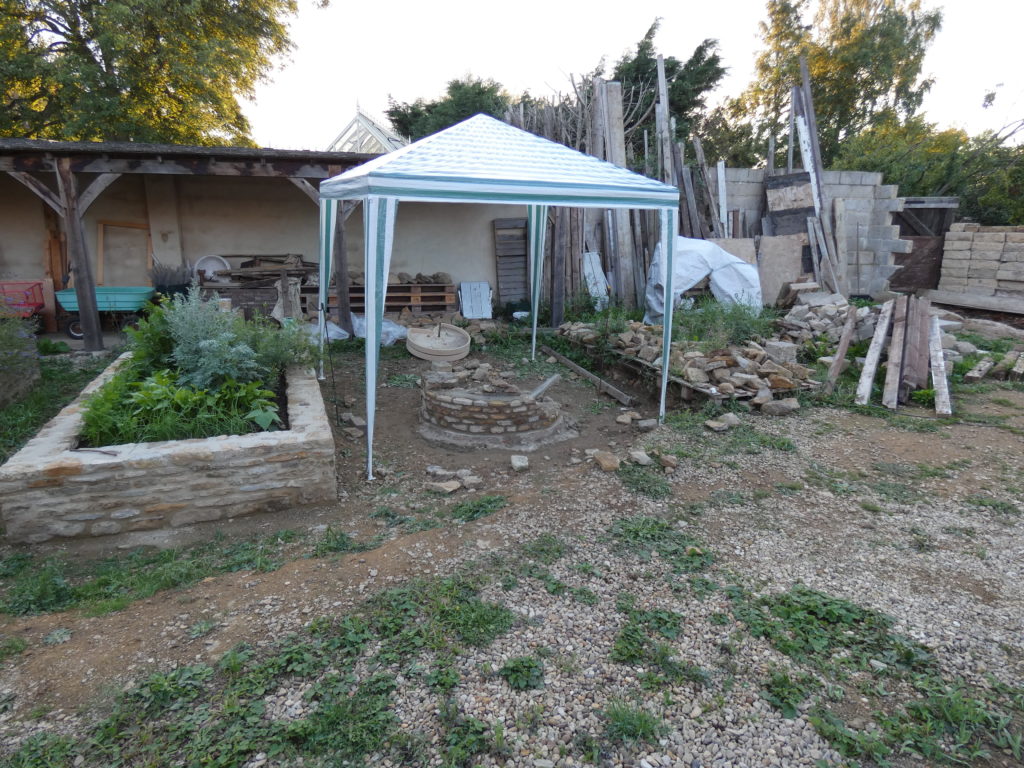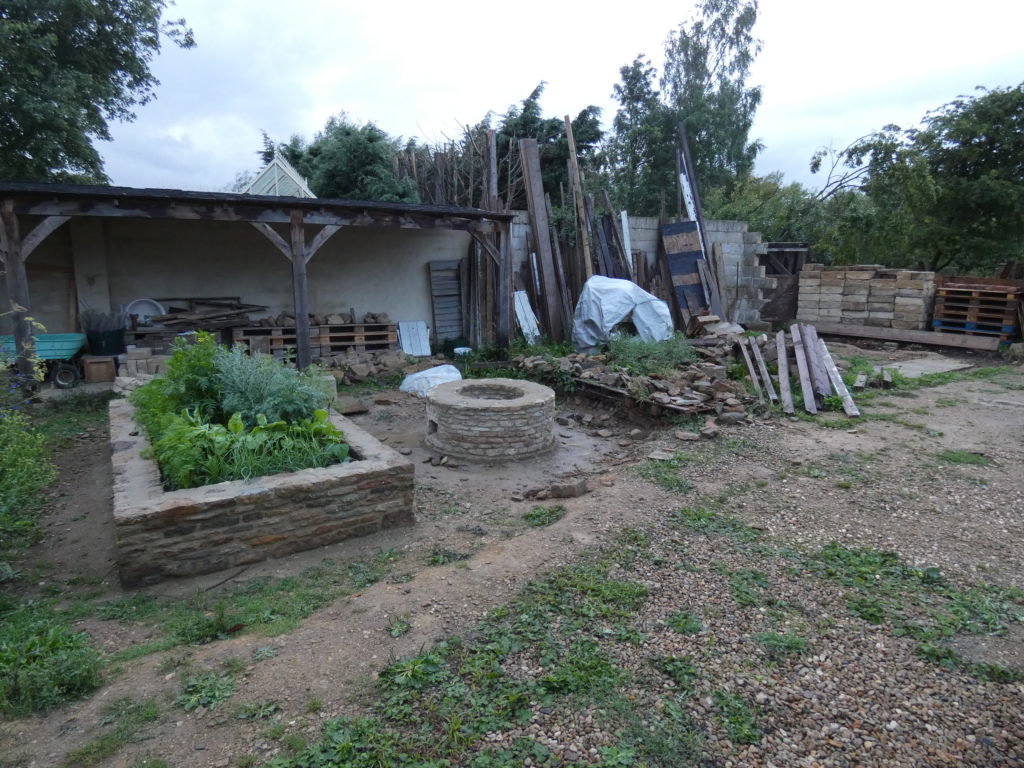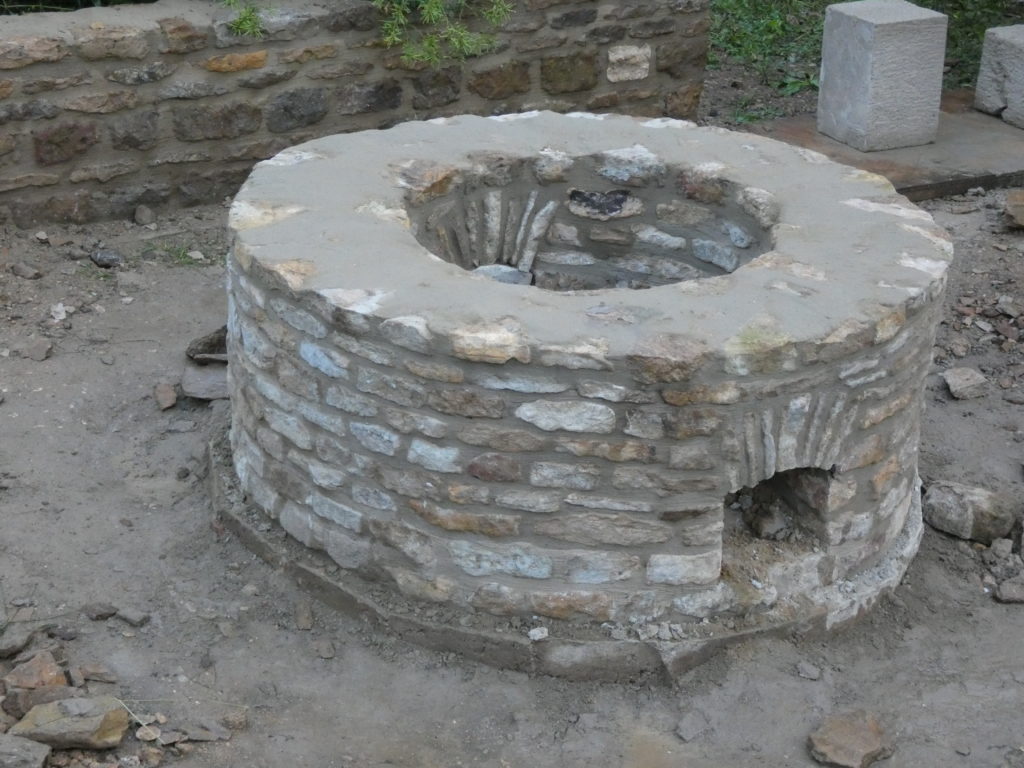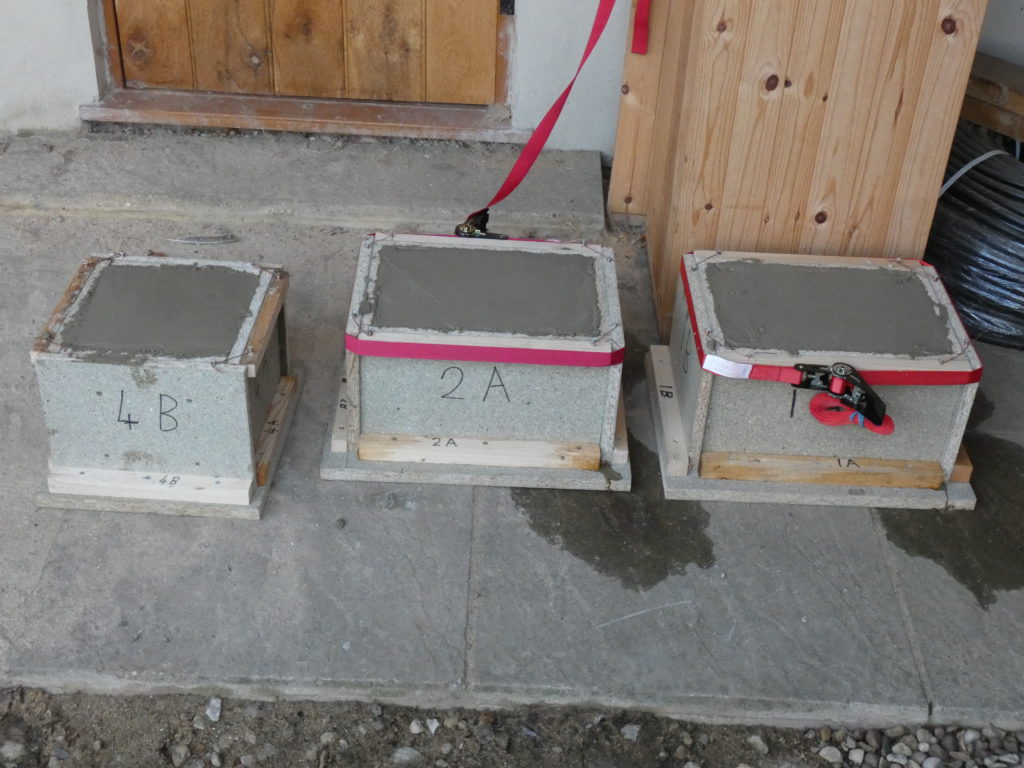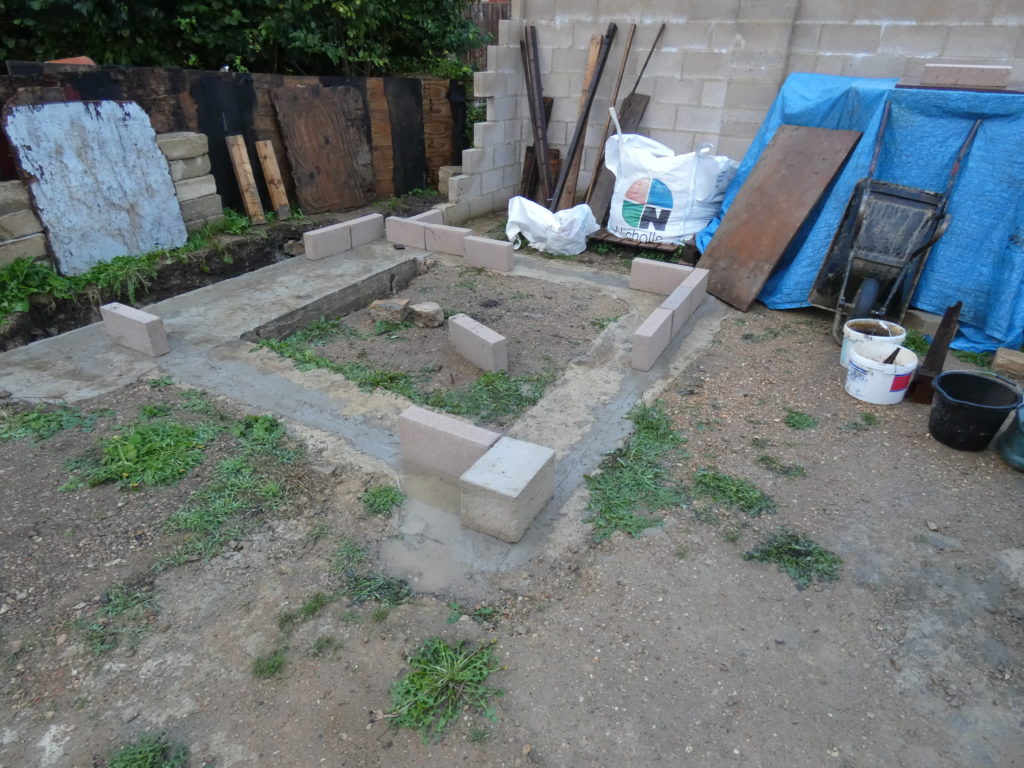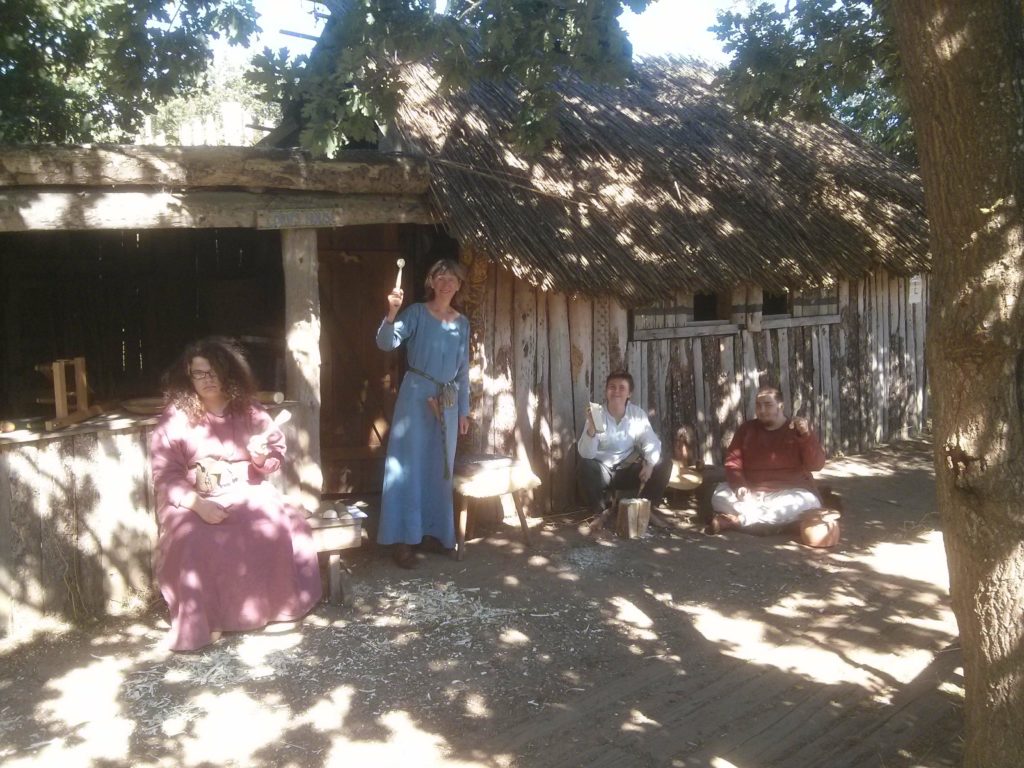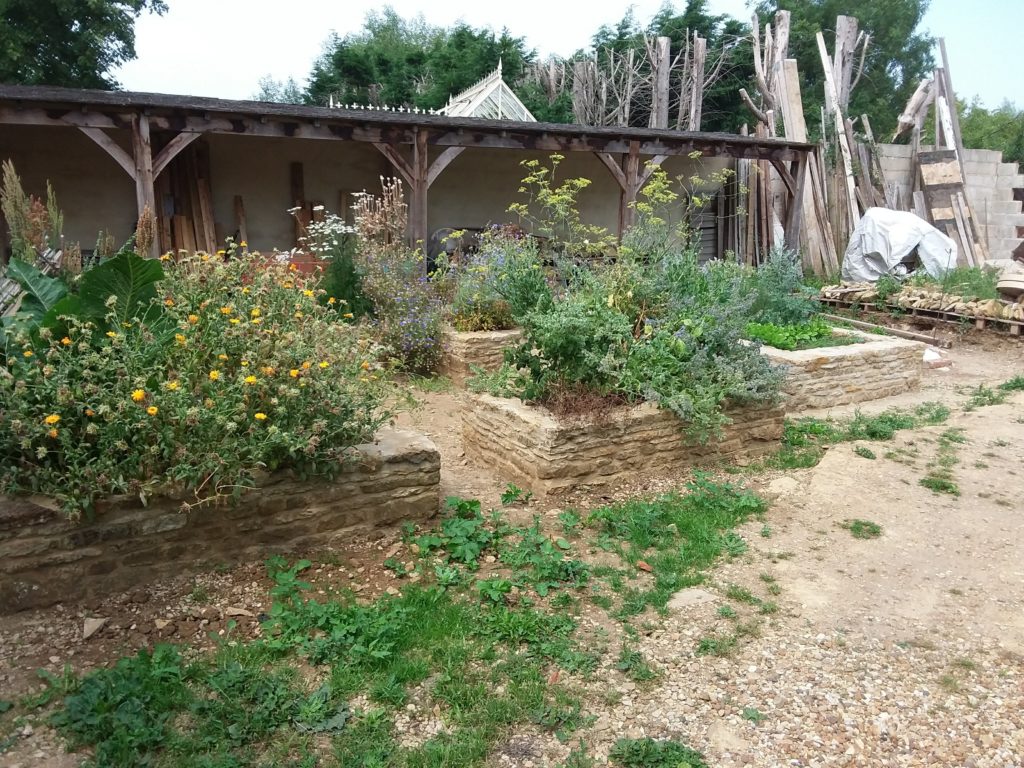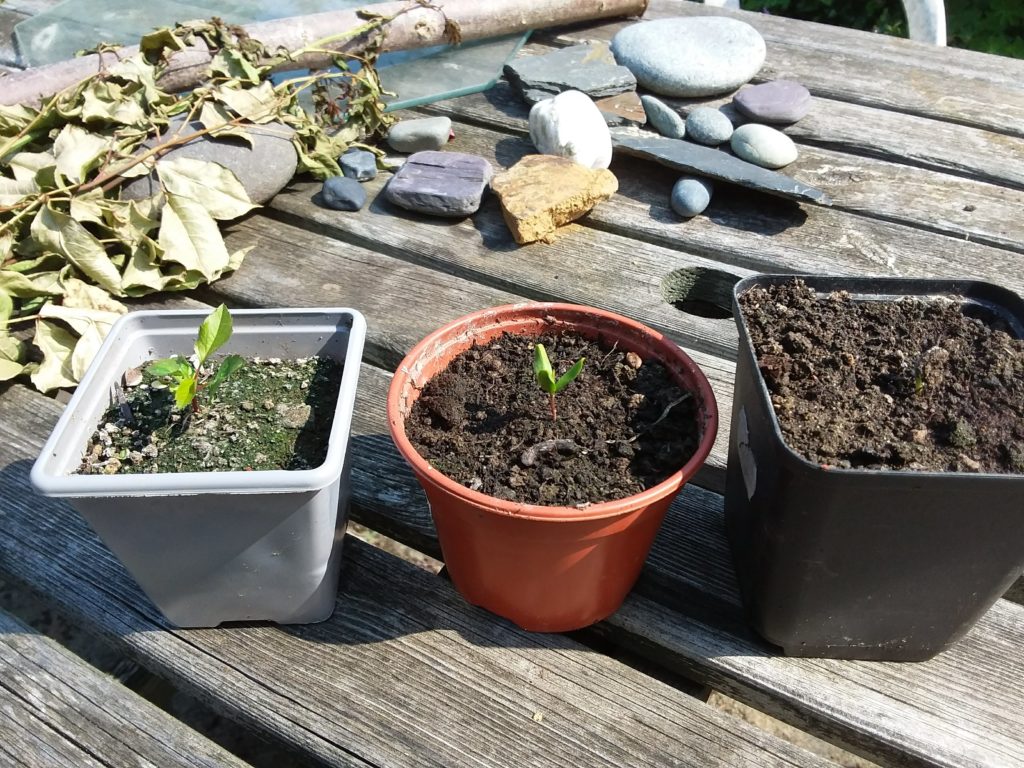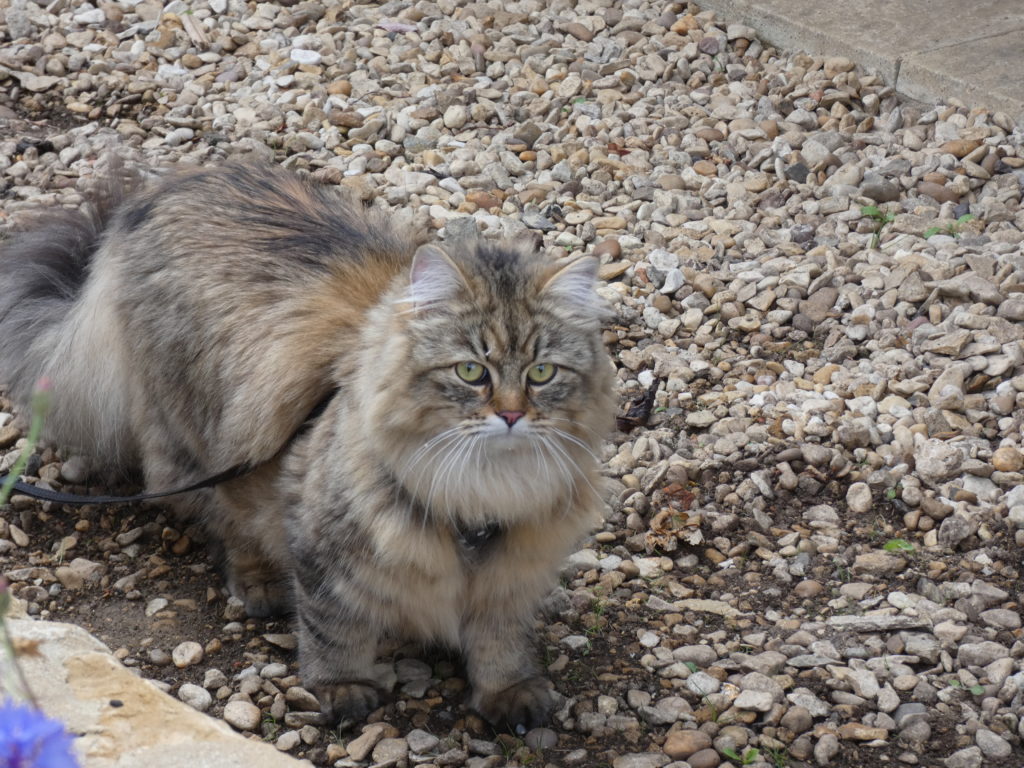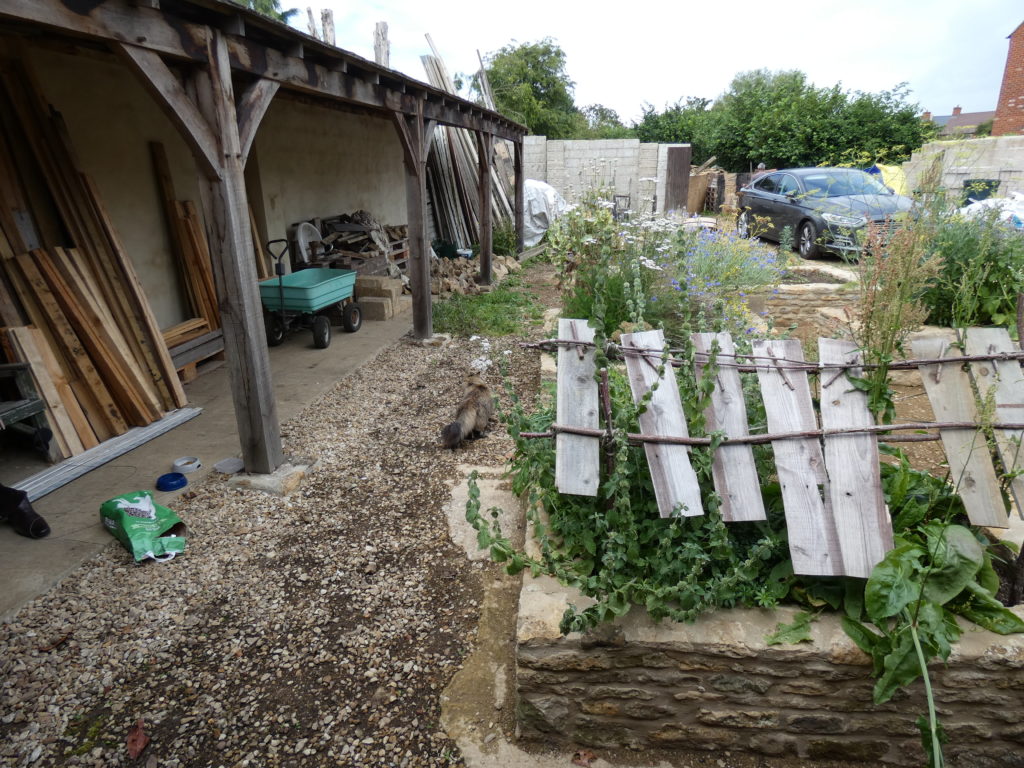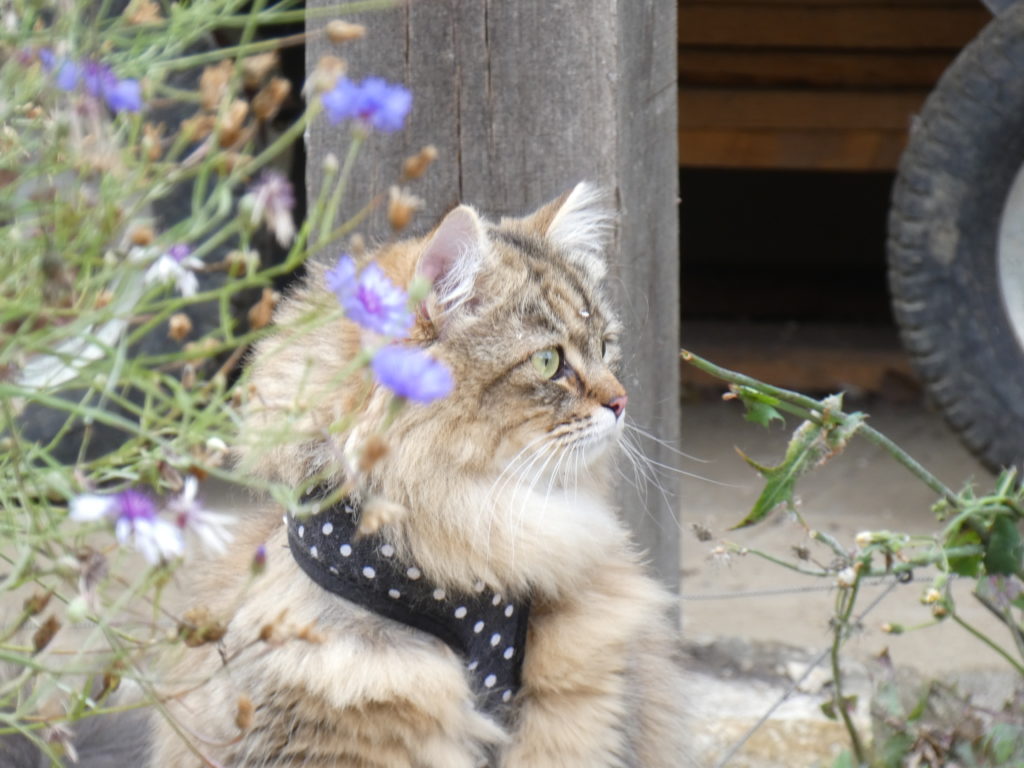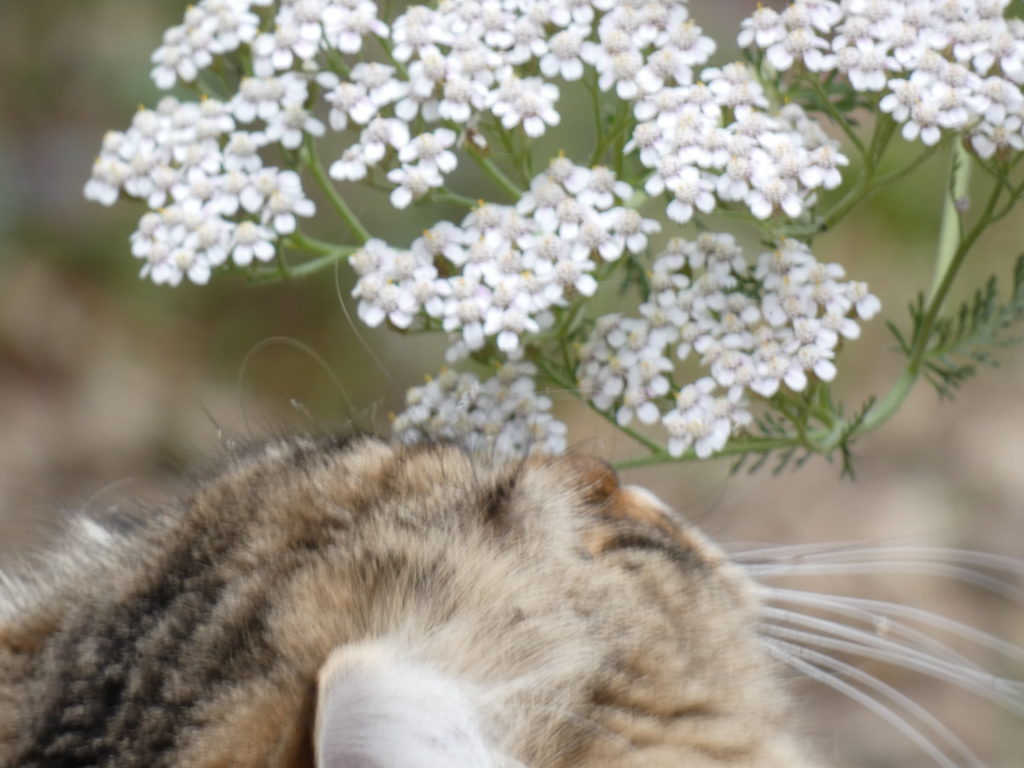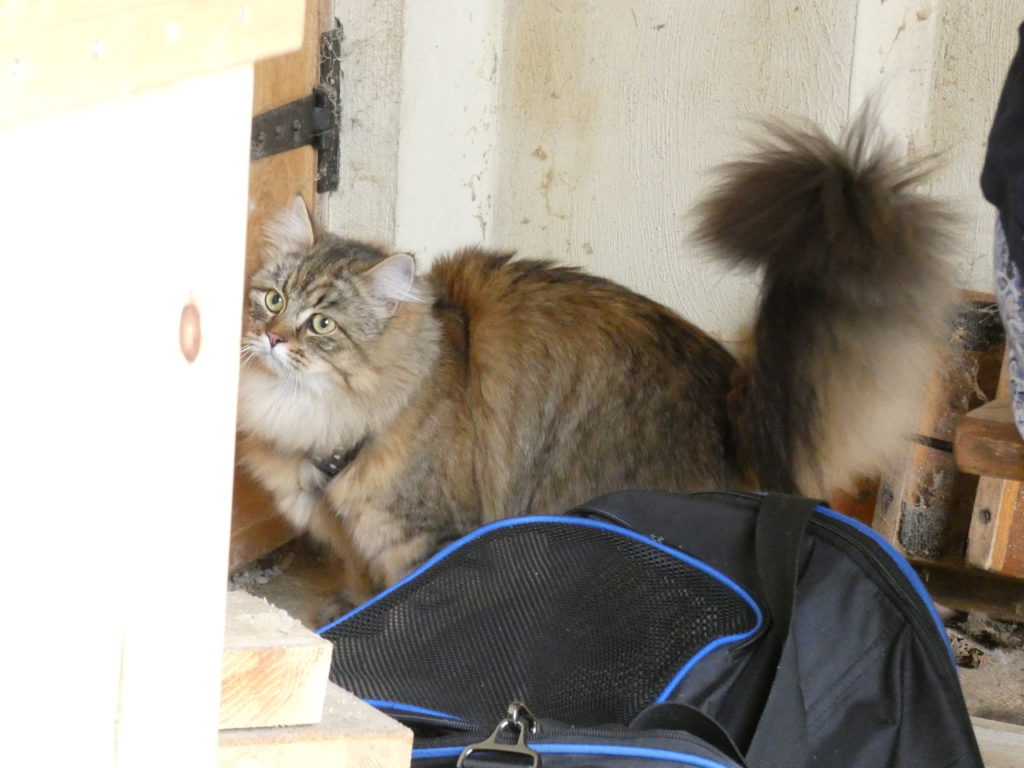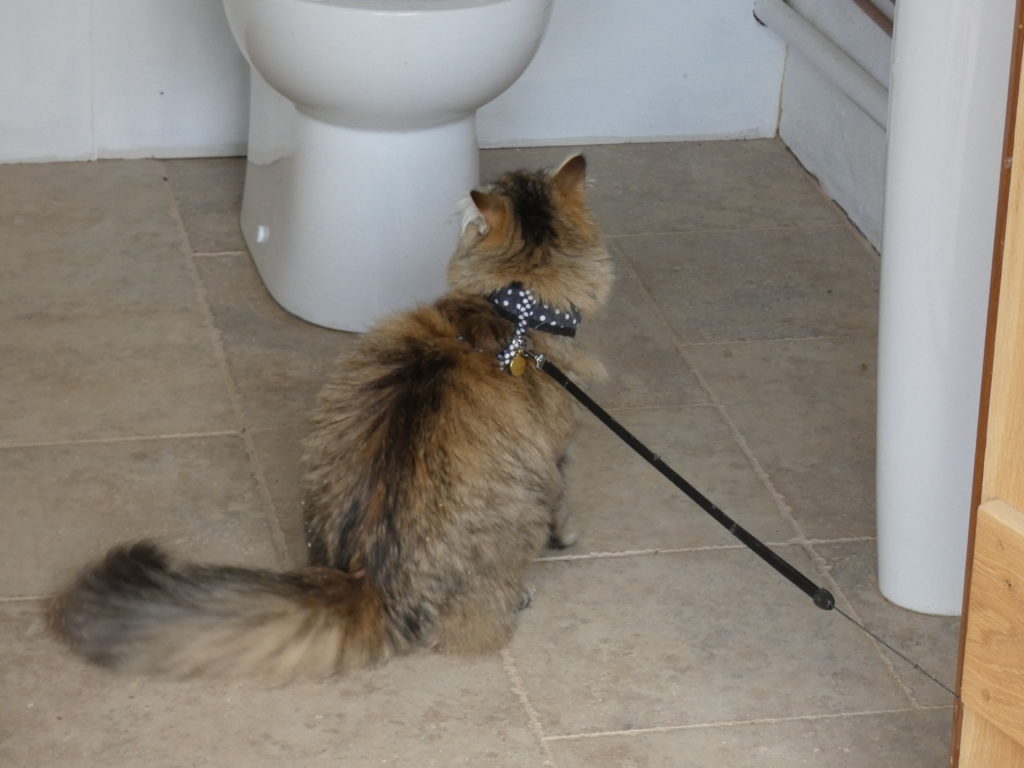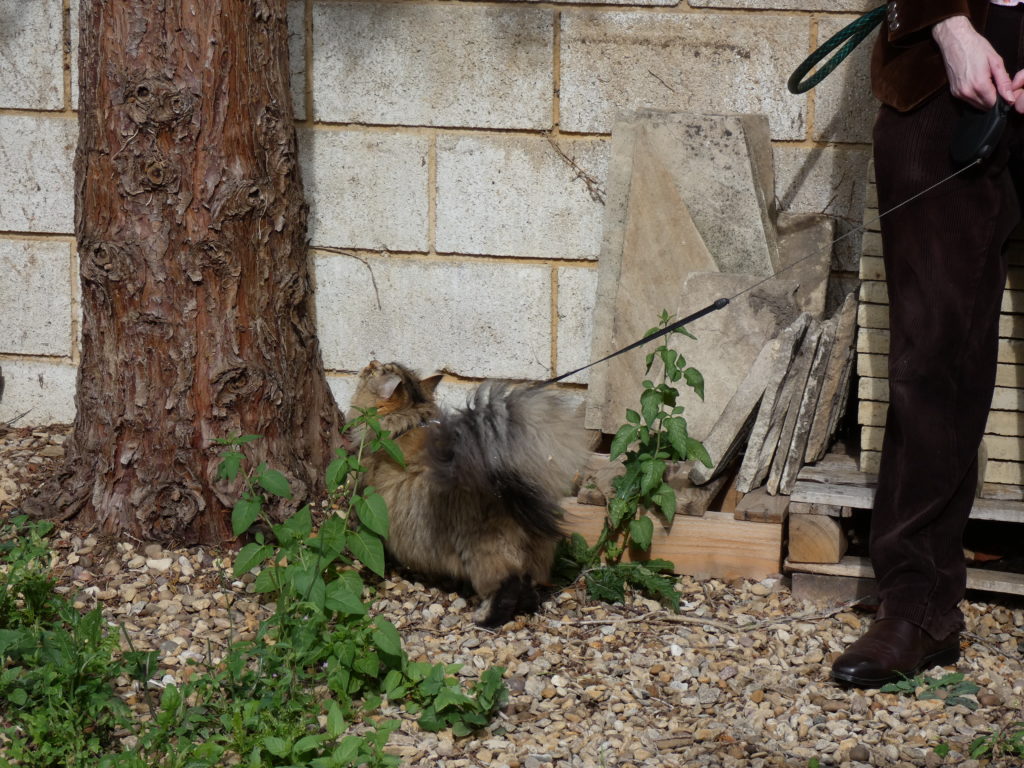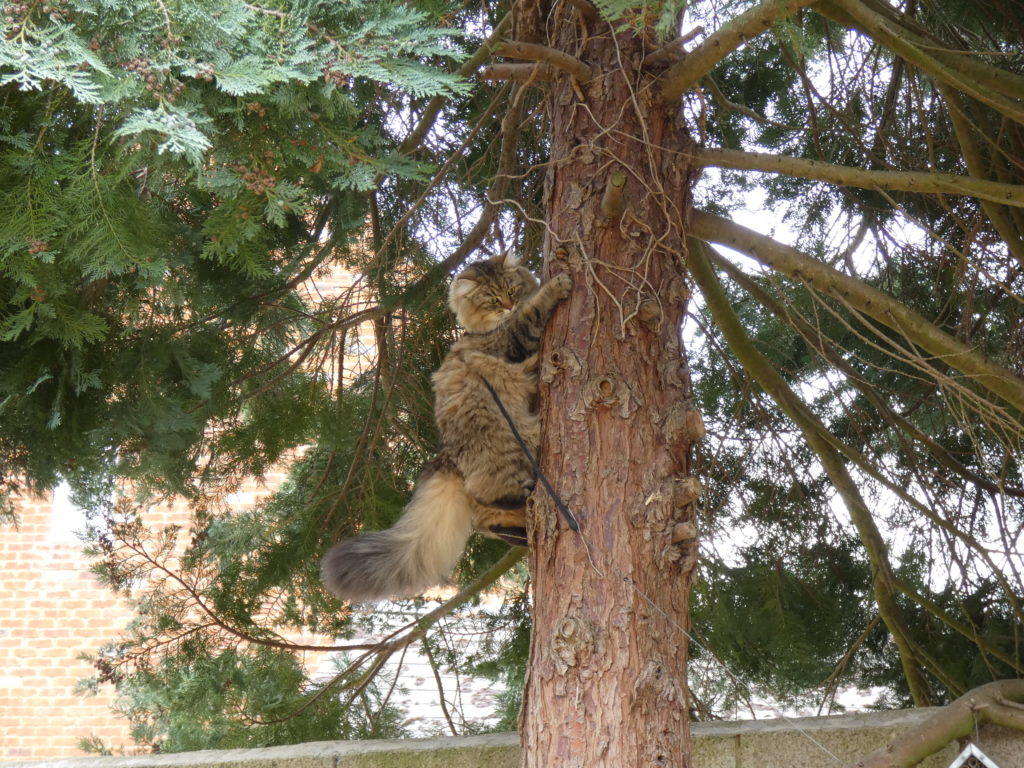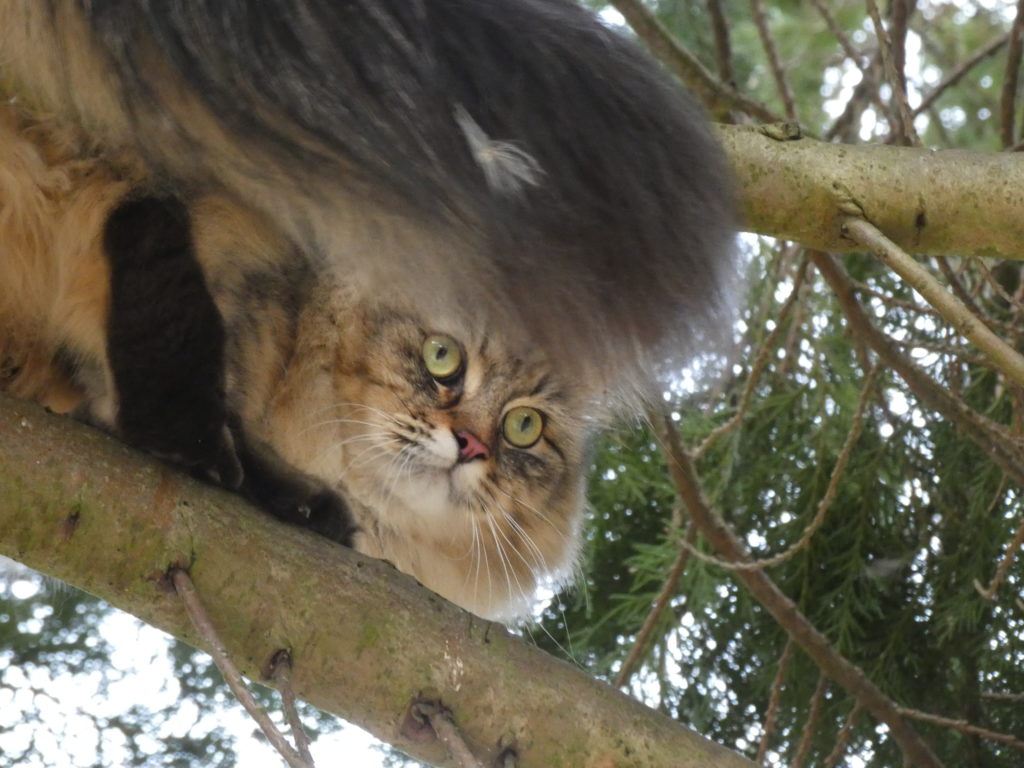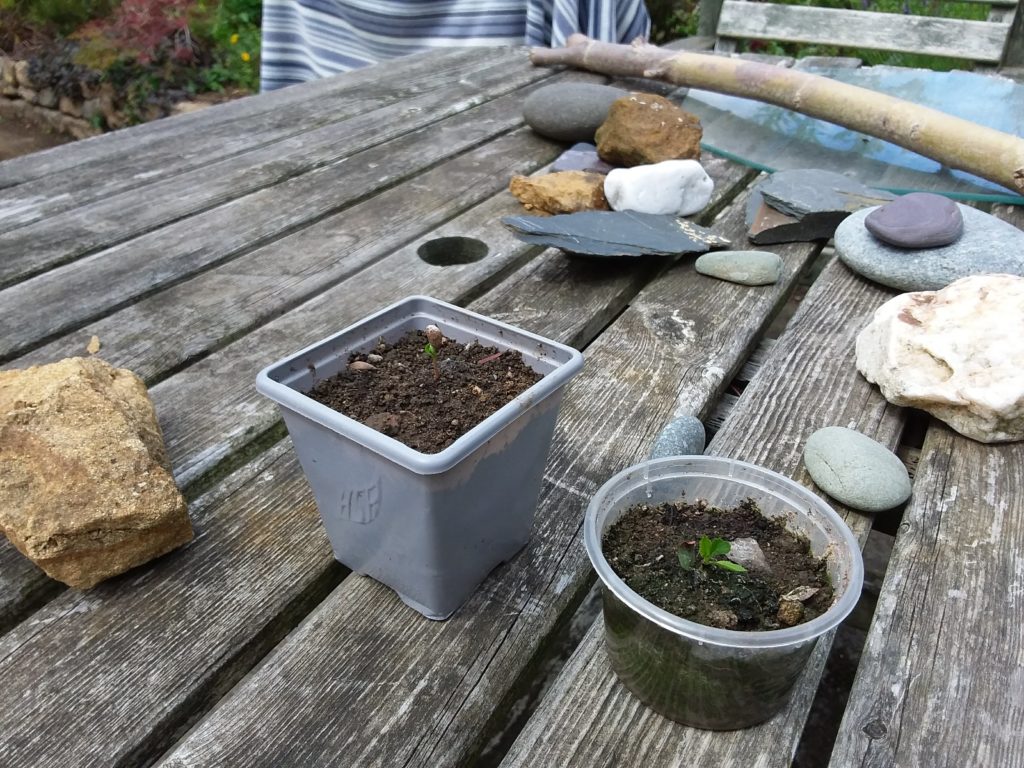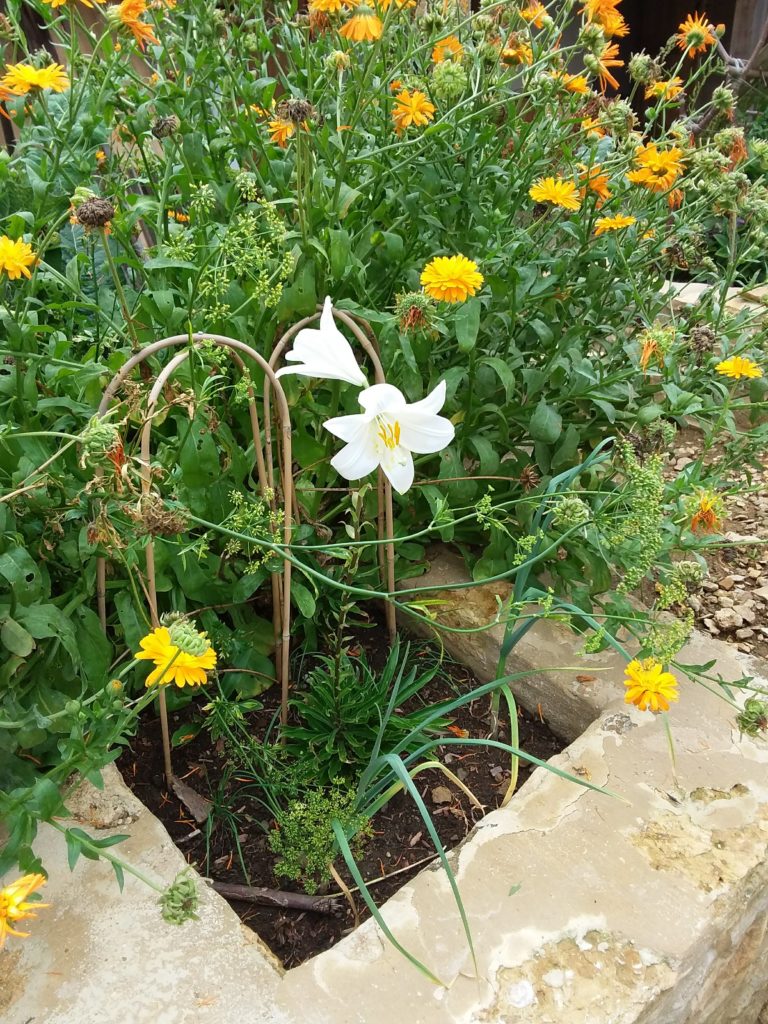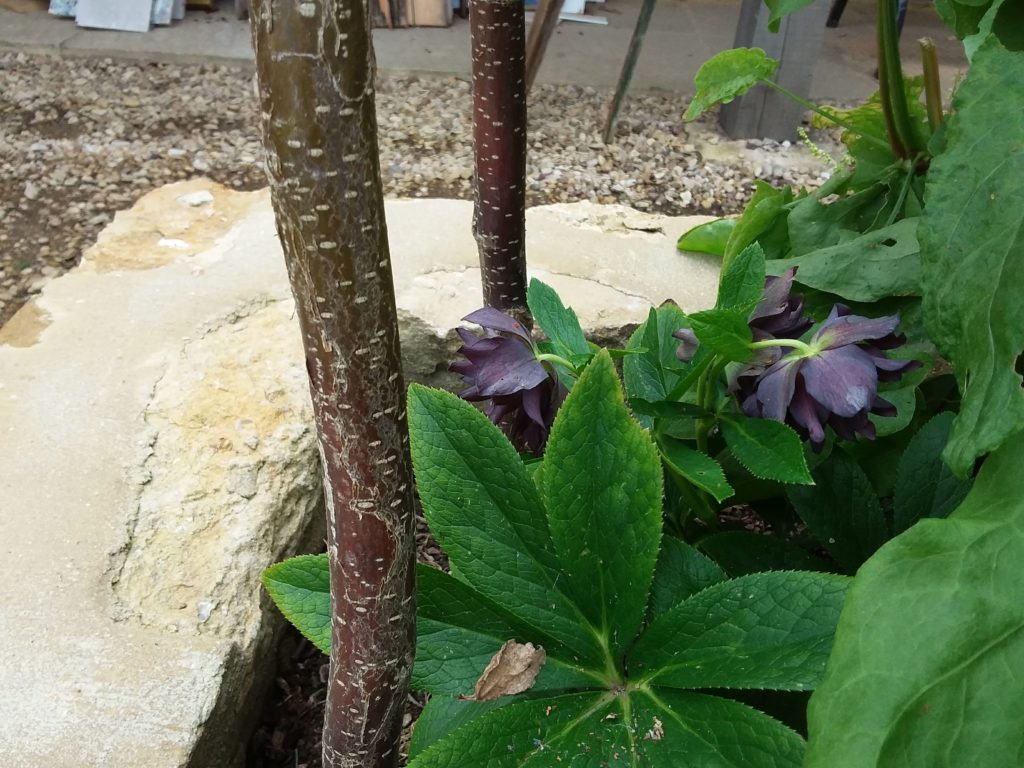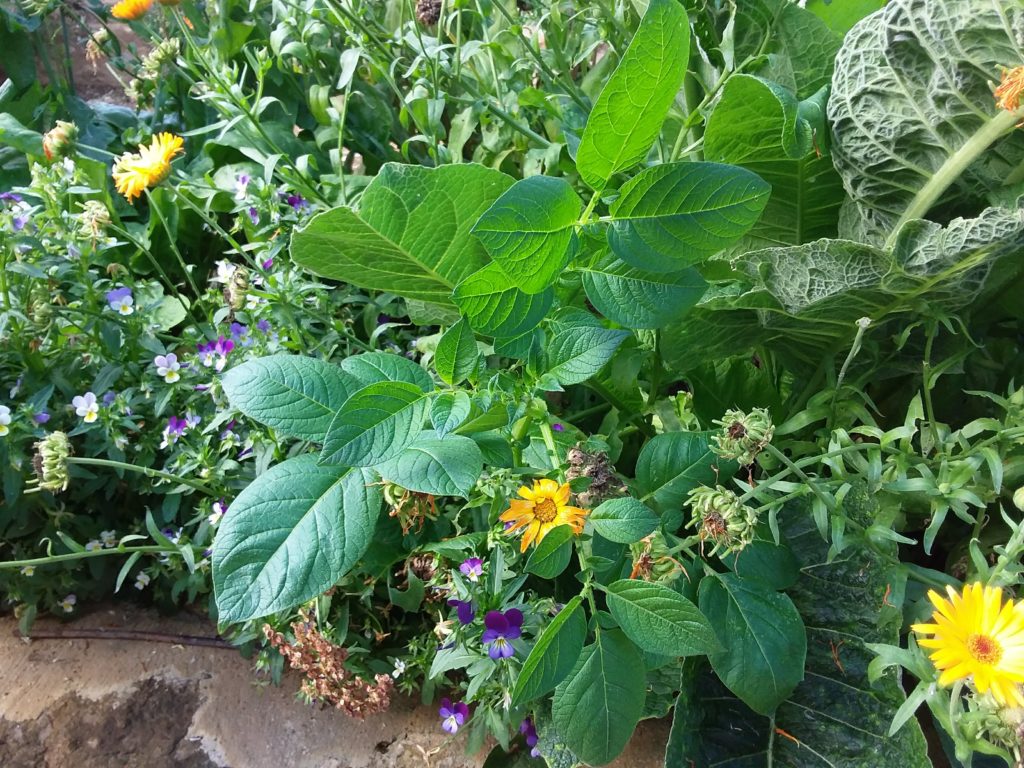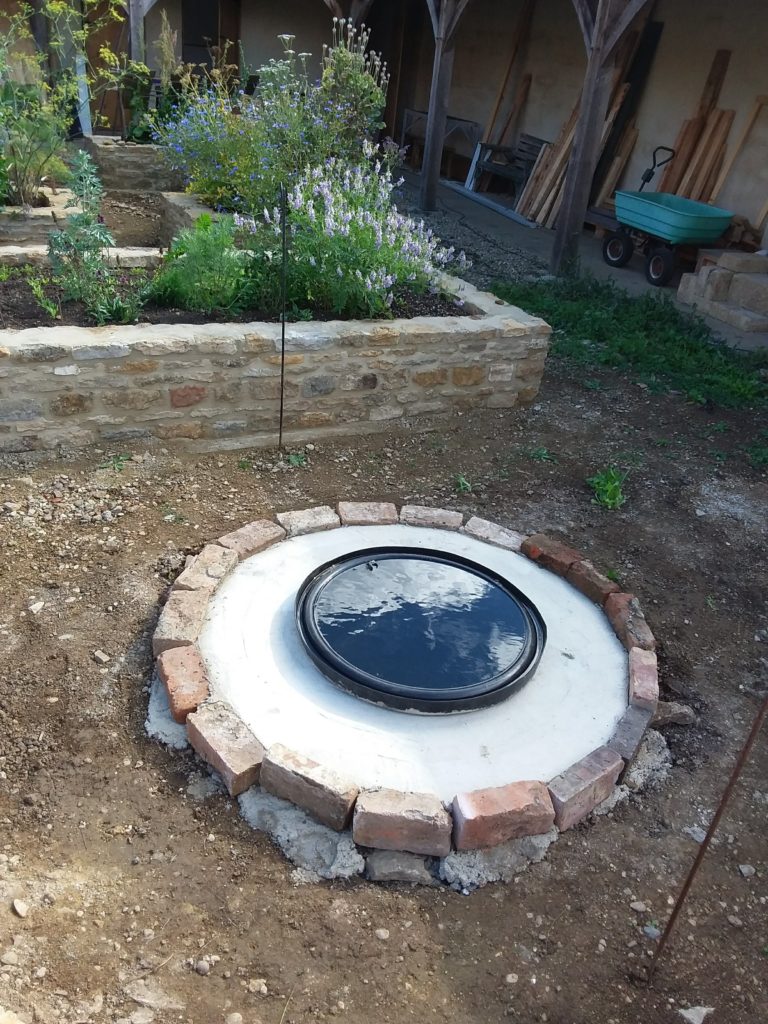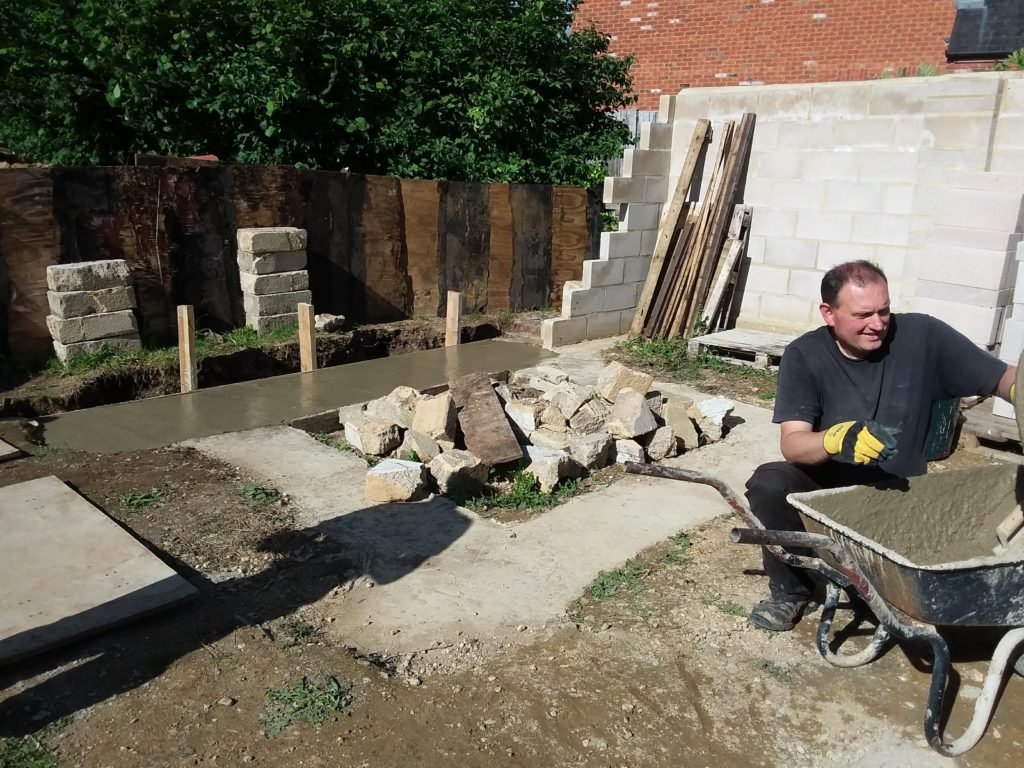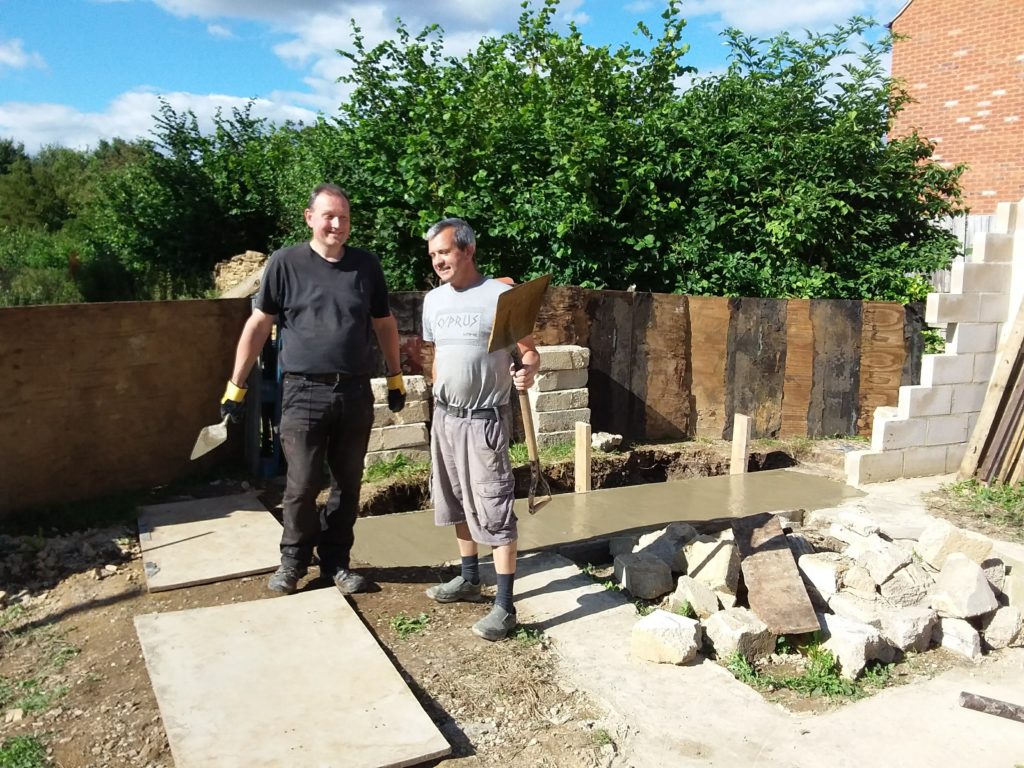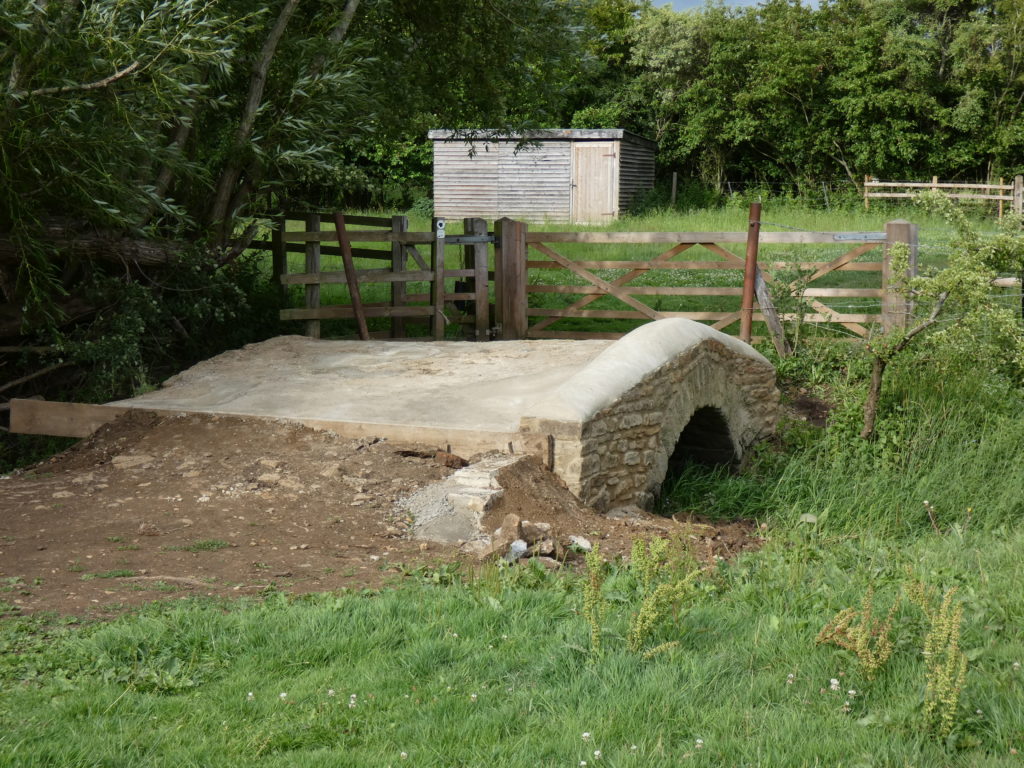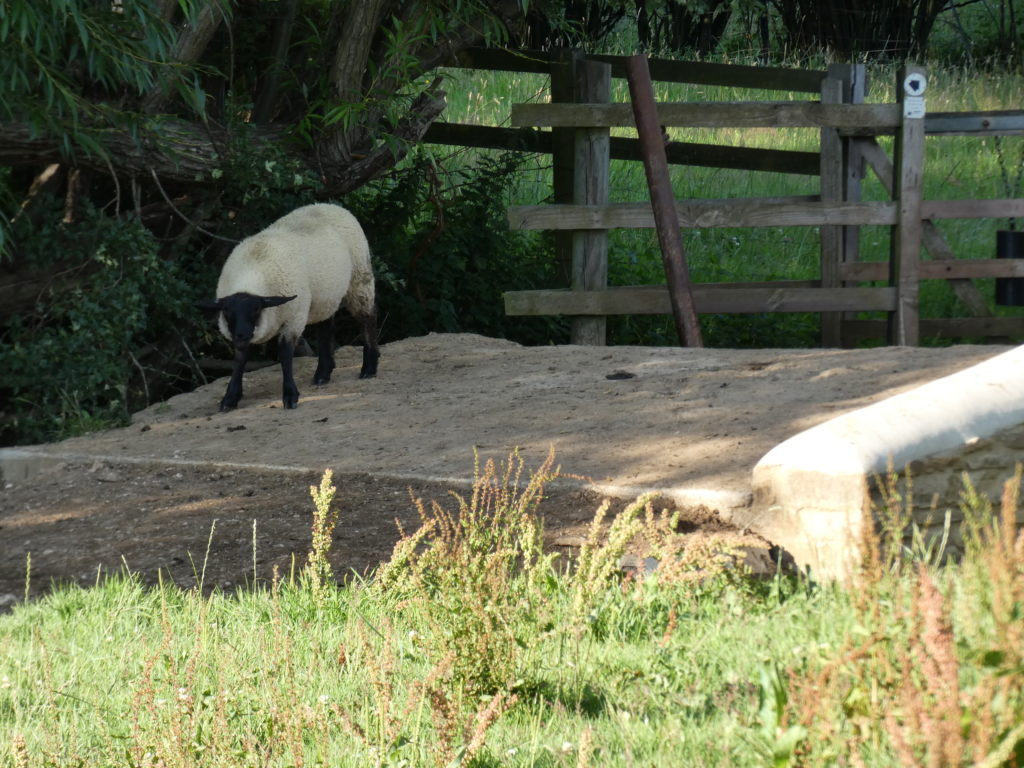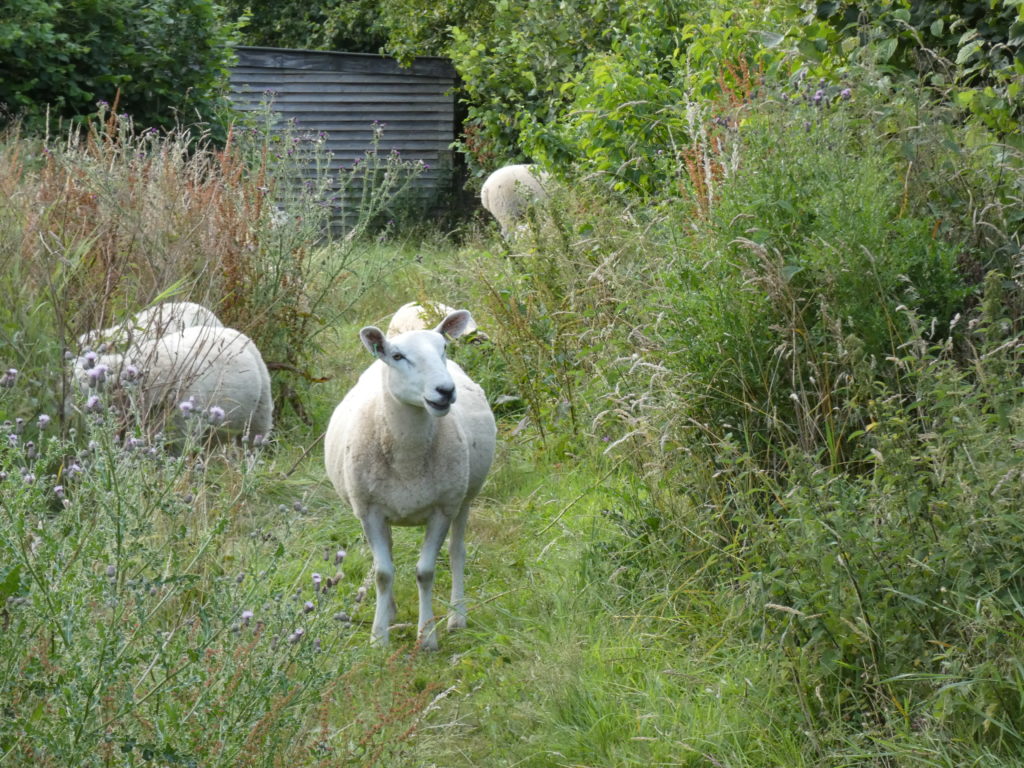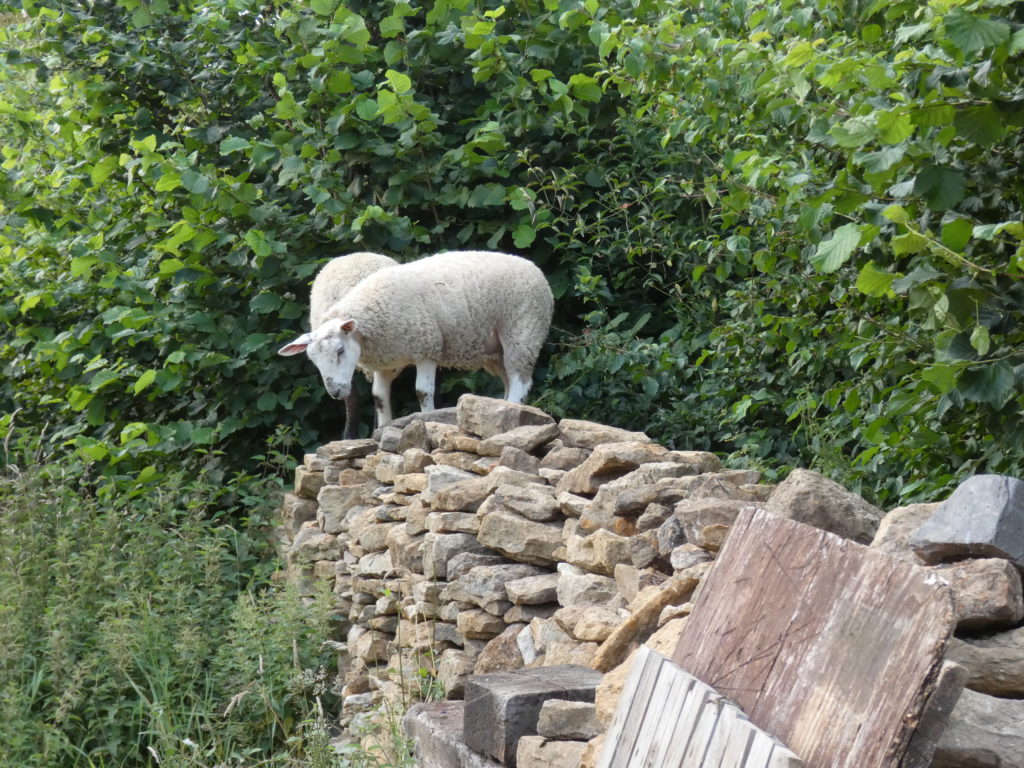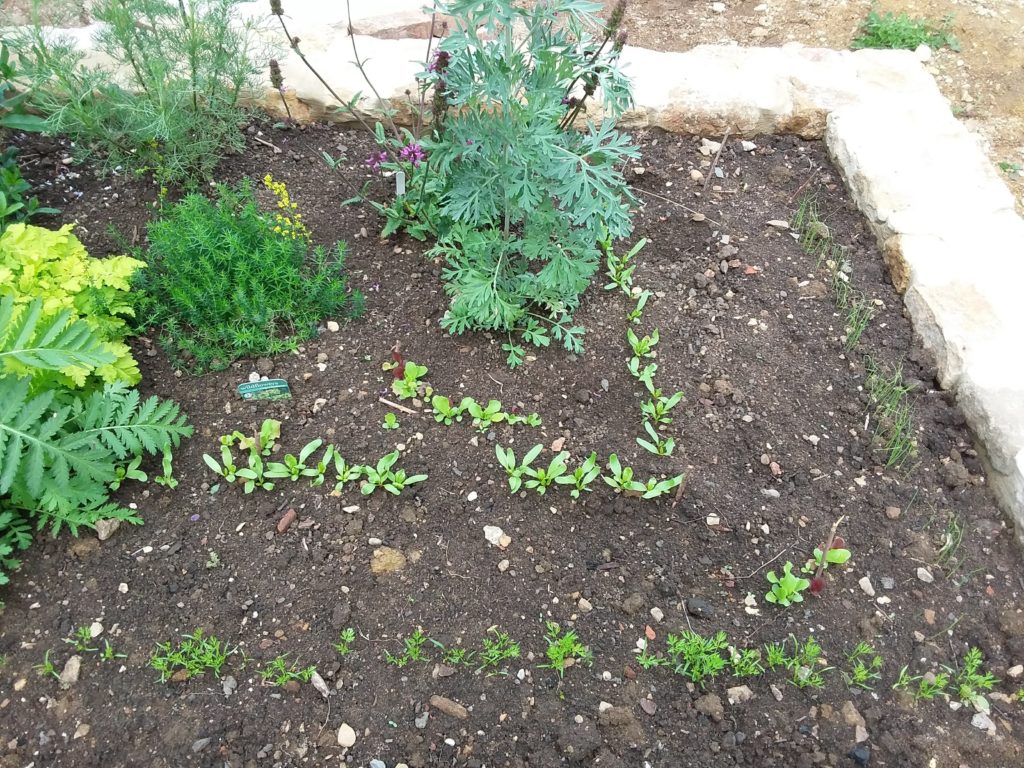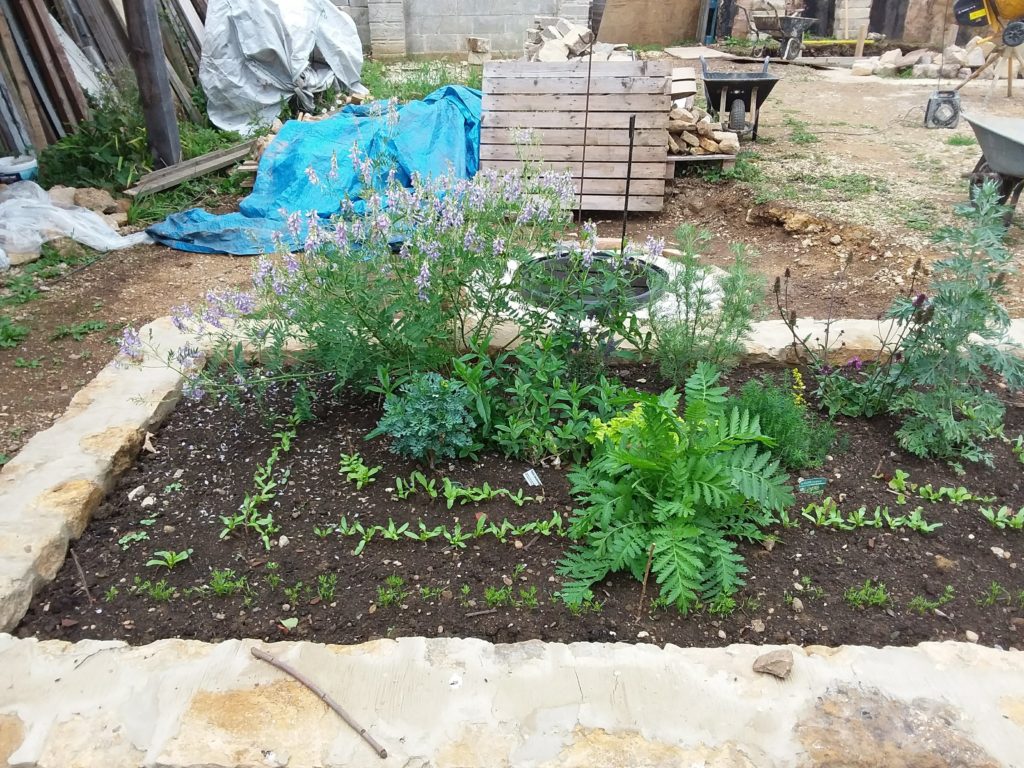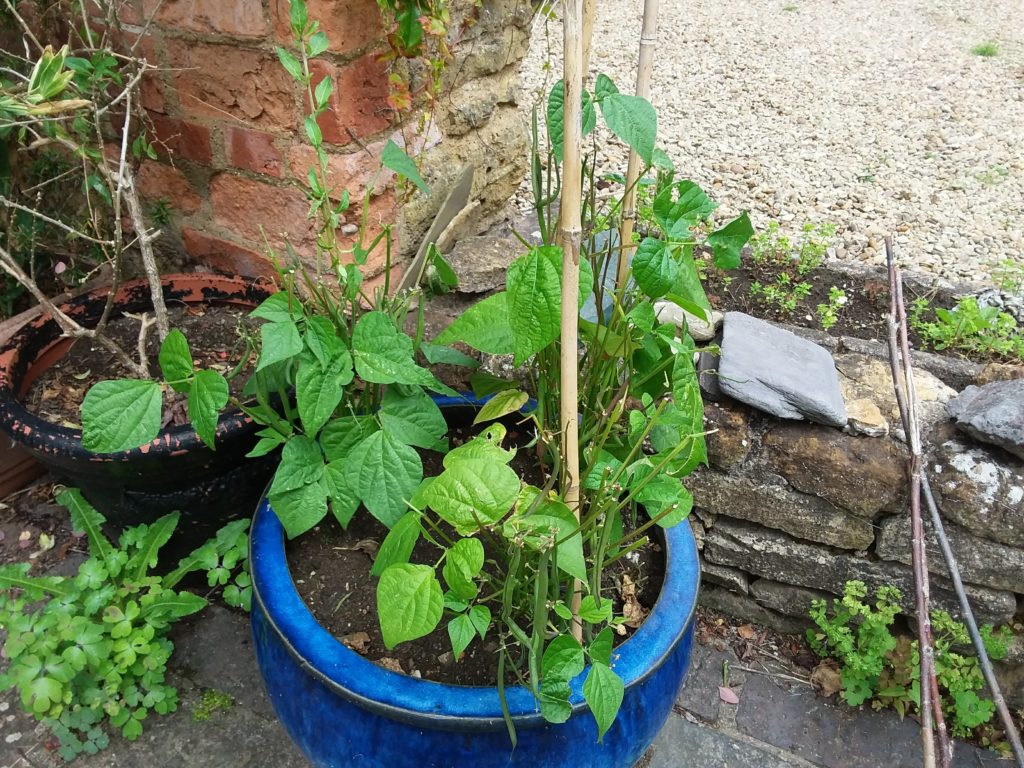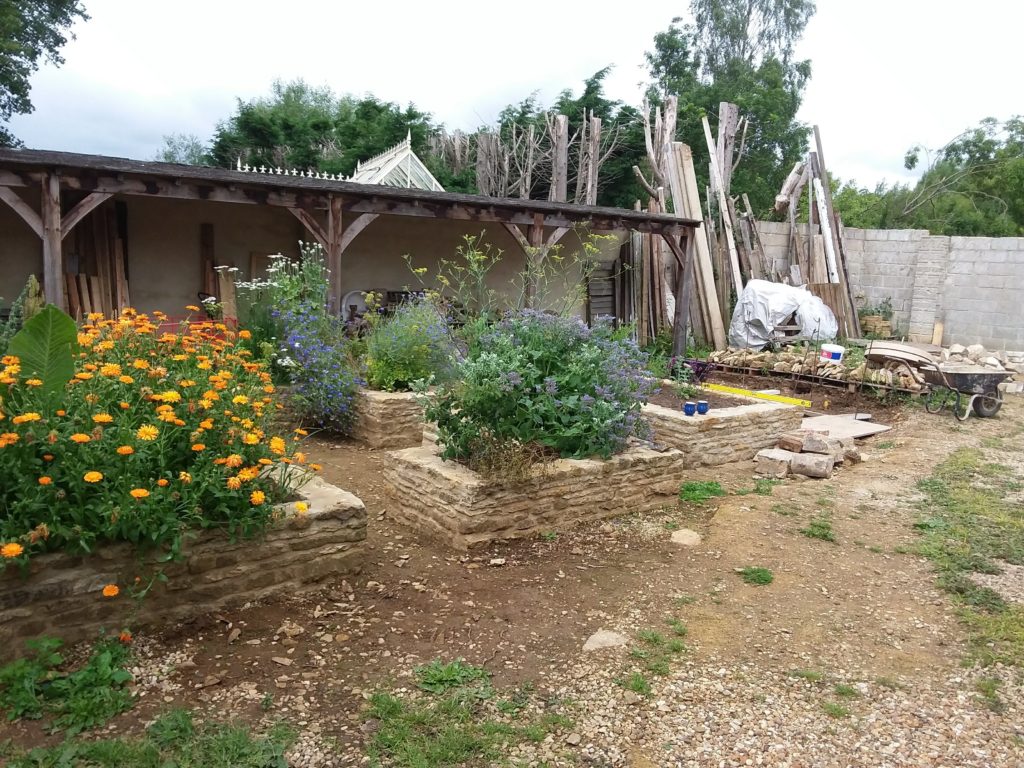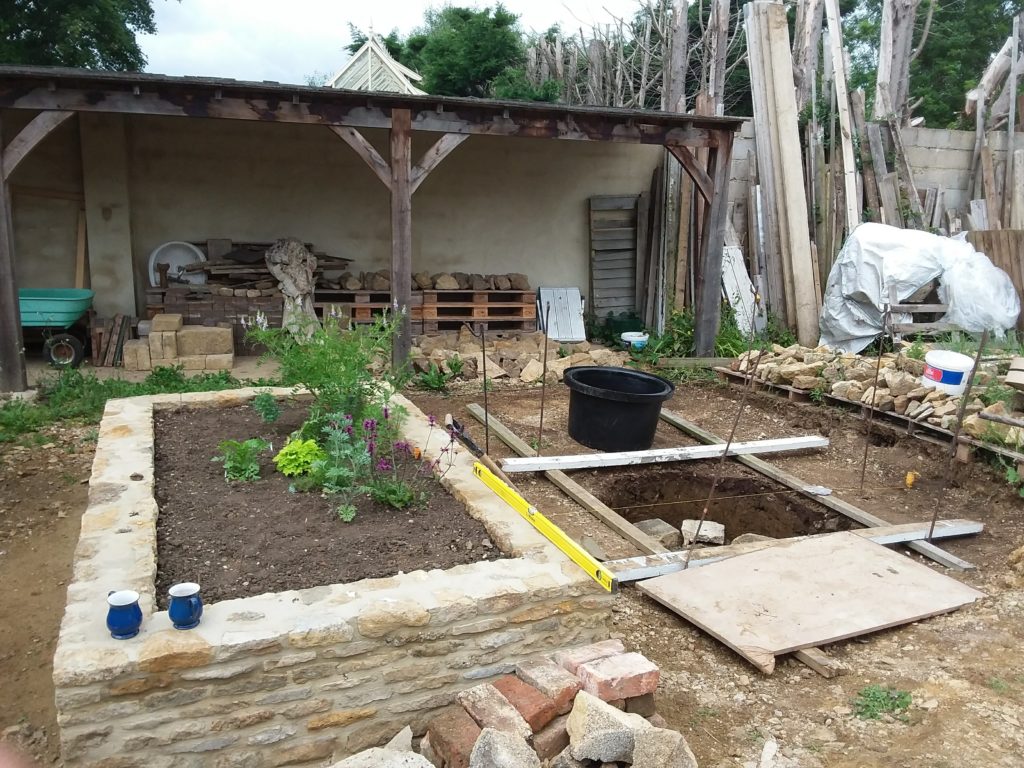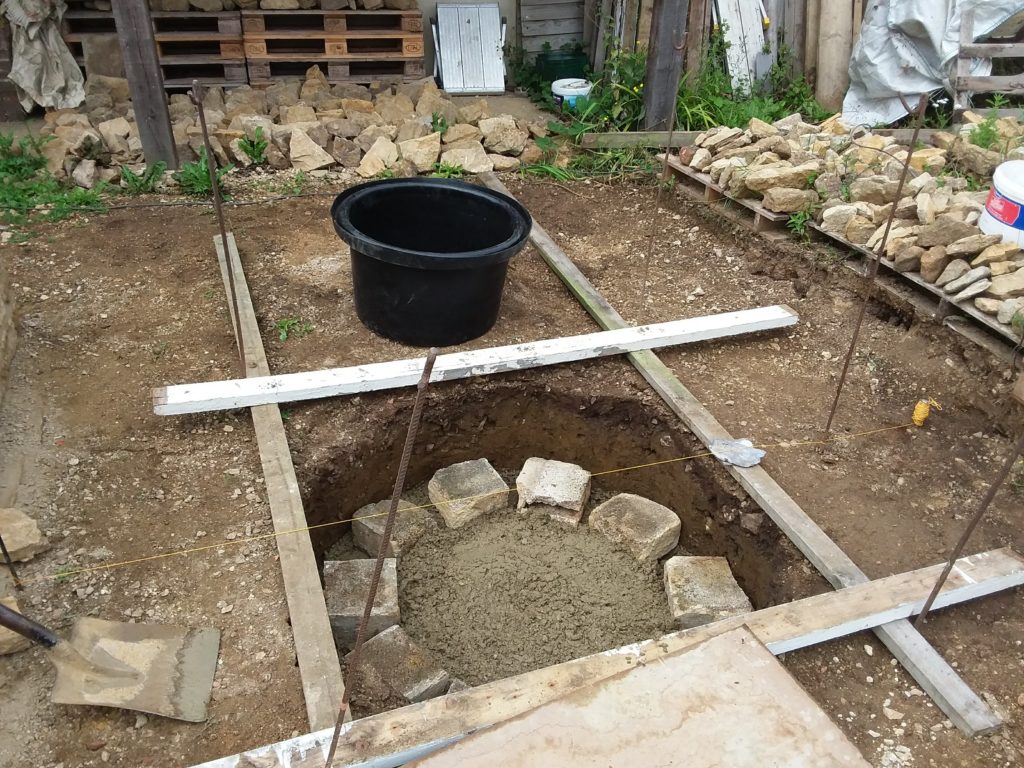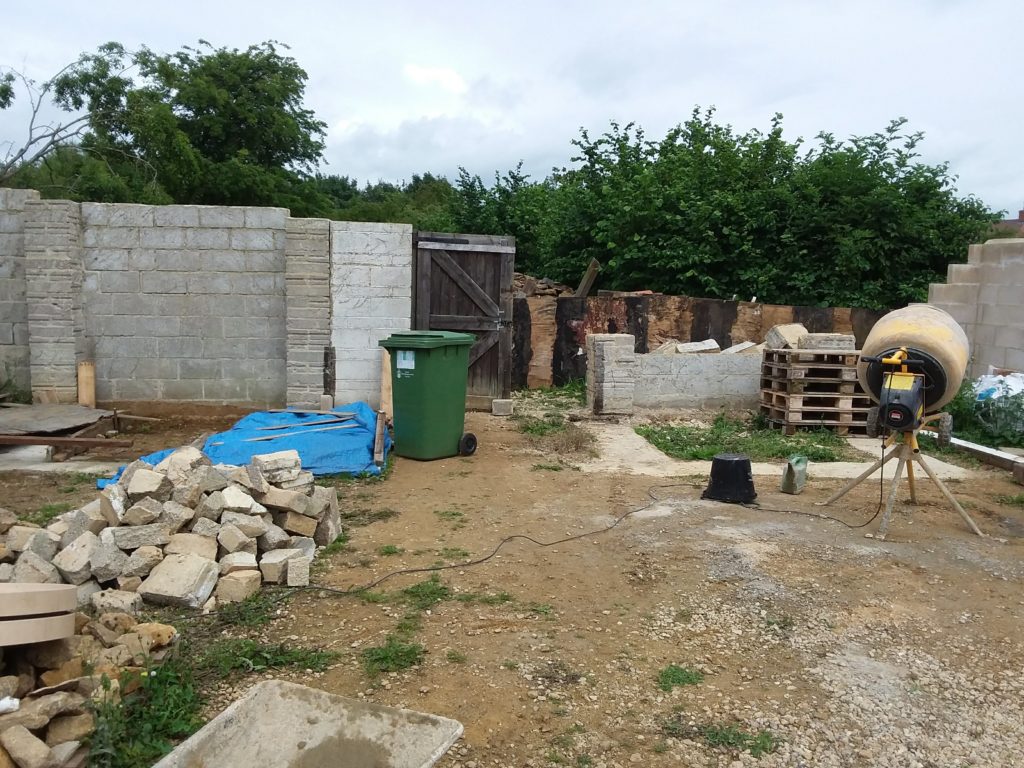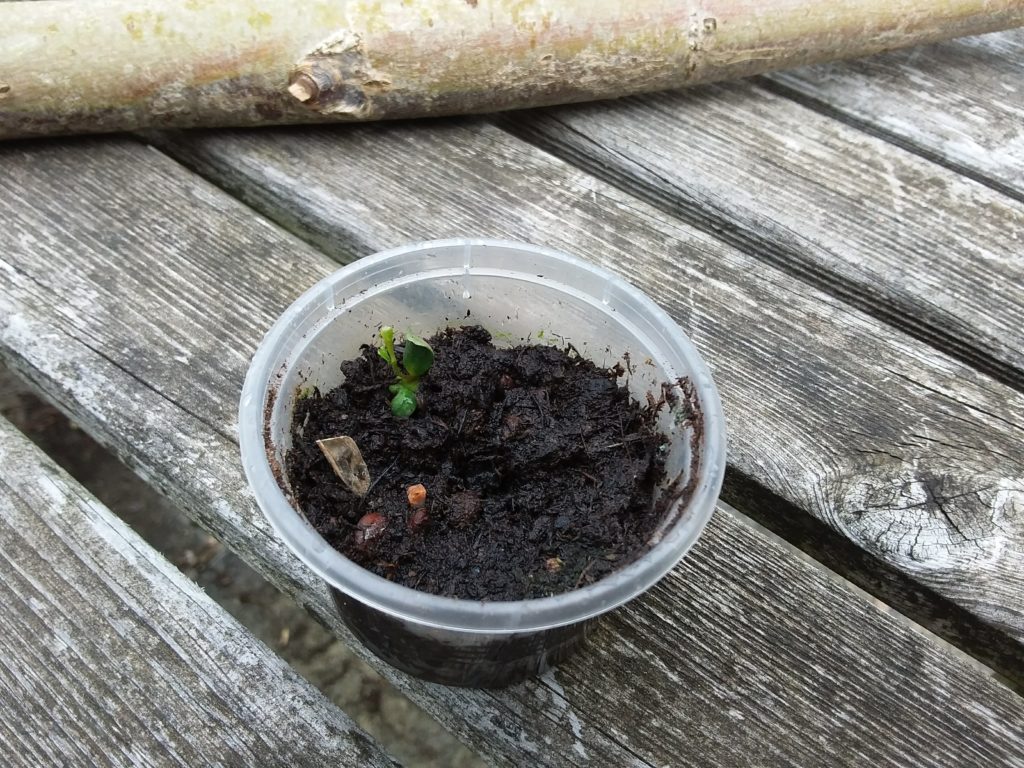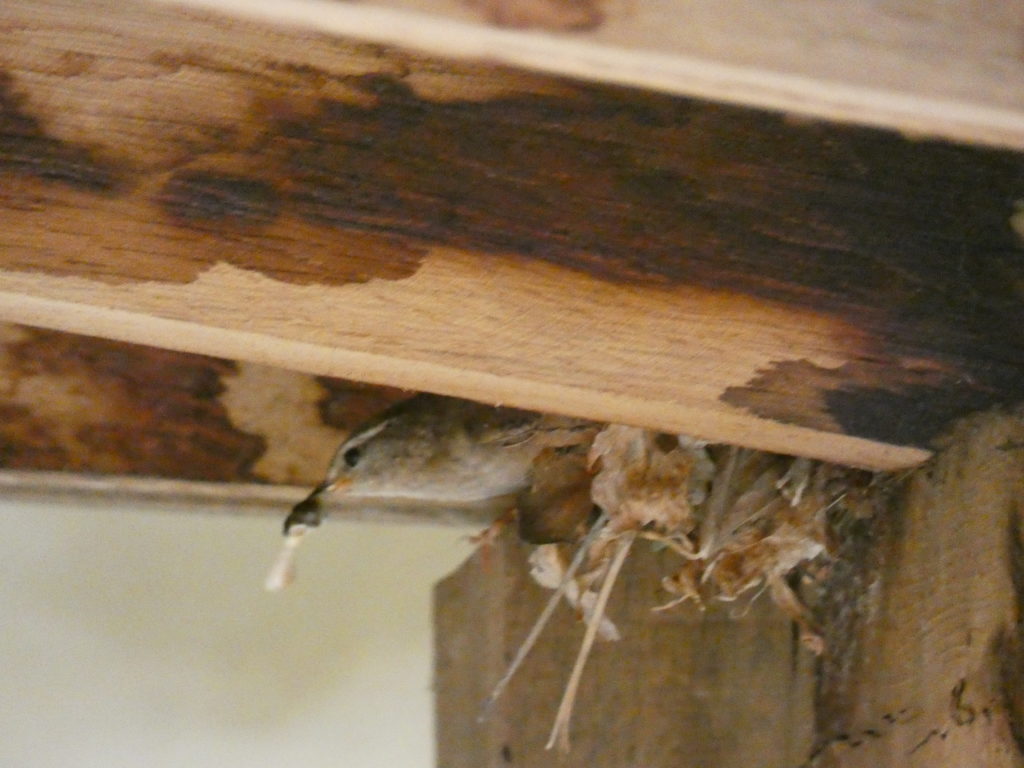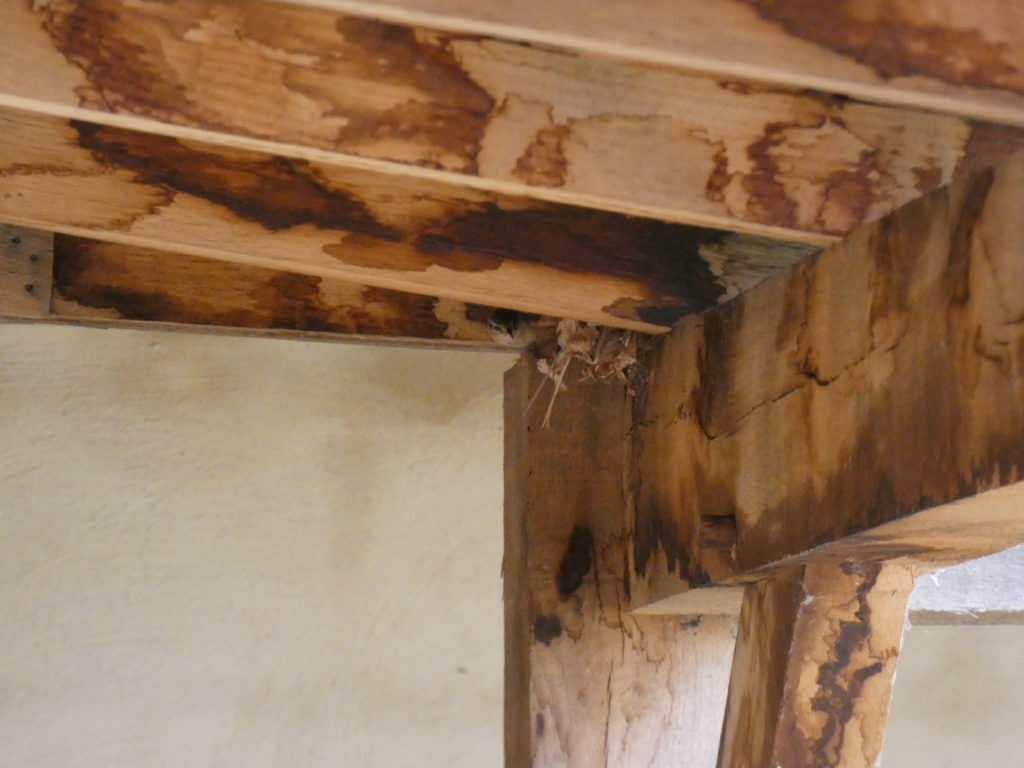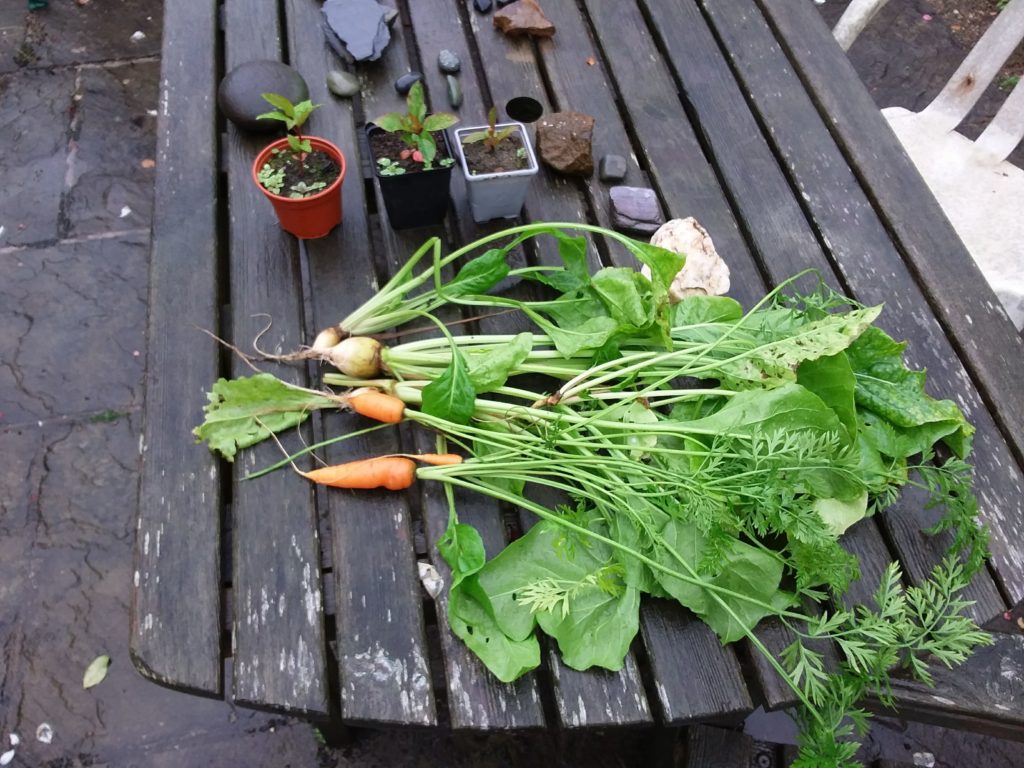
The three Braeburn apple seedlings are doing well in what has begun as a mild, wet October. I planted white beetroot and small carrots in a raised bed in July, and we are getting some harvest! They were very little trouble and taste good.
Today’s great excitement is I HAVE A CORACLE!!! After 4 years of watching the flood waters rise on Lake Meadow, with just one trip around it rowing an inflatable dinghy, I lucked out this weekend. The rain fell steadily for three days and my mind turned coraclewards – and on Ebay, I found a coracle that ticked all my boxes. It was made in a workshop and used in an Ironbridge Regatta, I think in 2018, but the owner is downsizing and wanted to find a home for it. He was even willing to transport it here on the roof of his car in exchange for fuel money, which was defiantly A and B the C of D. Everything came together and my coracle arrived on a mild day with the flood waters about as high as I’ve seen them.
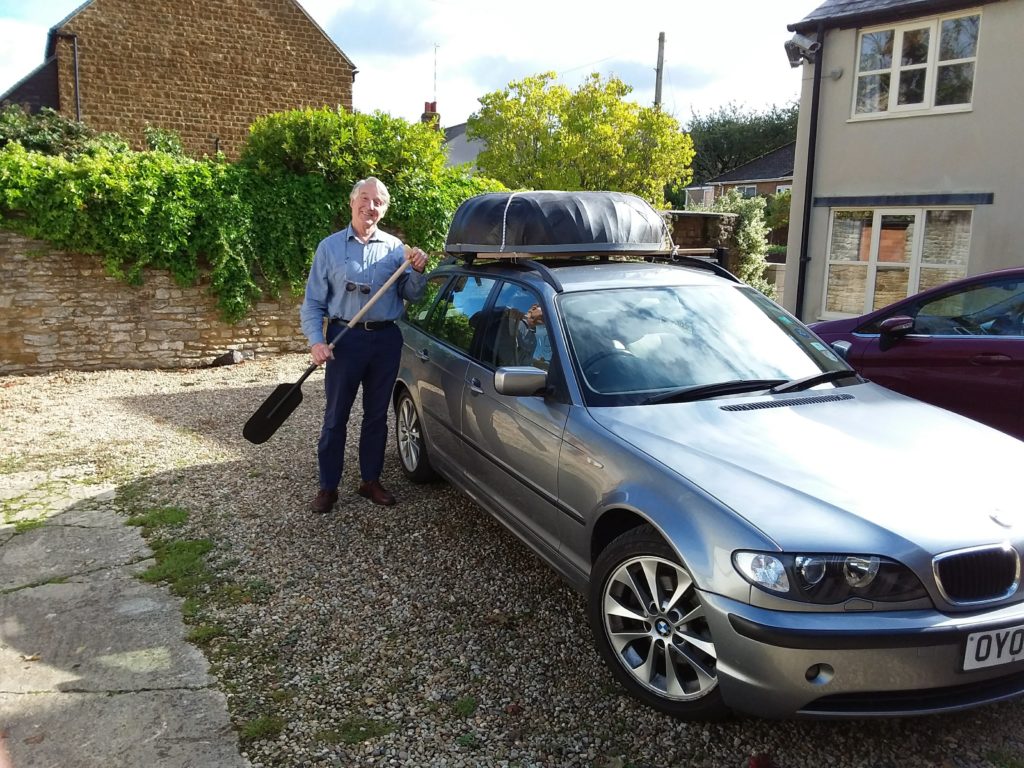
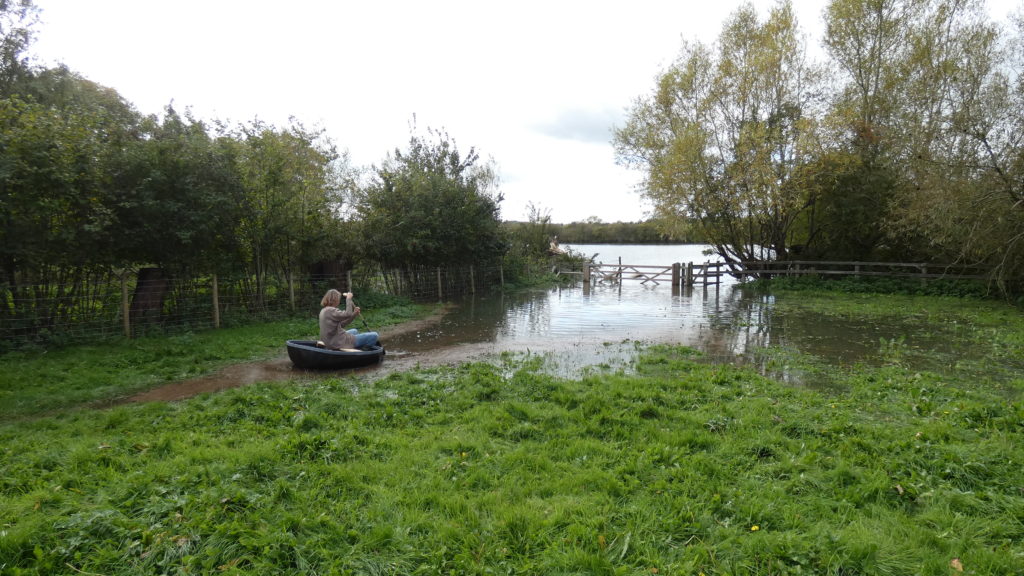
The first challenge was getting in with no jetty. Fortunately my first idea, to sit on the bench and then lift my feet in, worked really well.
Paddling is hard work, you have to pull yourself forward while also directing the water to one side of the boat or the other. And she was very good at going round and round, but not so keen on going forwards. As soon as I stopped paddling, back I’d blow to the shallow bit…The wind was blowing westerly which was a good thing really, as it pushed me back to land instead of out into the wild open sea (meadow).
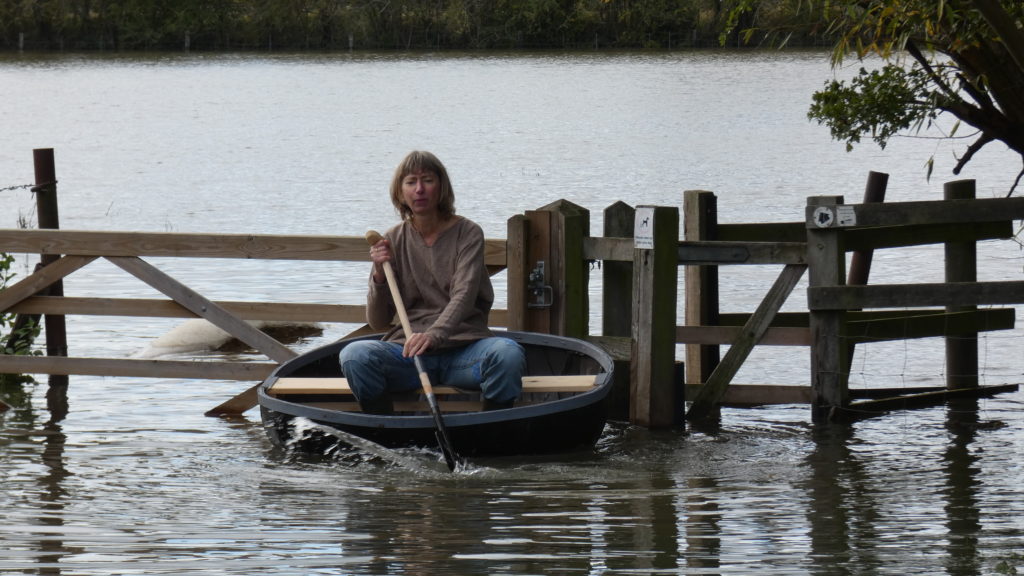
Al gave my boat a good push out each time, and eventually I made it to the gate. Don’t heed the scowl, that’s just my concentrating face. I was having a lot of fun!
A boat needs a name, and Bootle-Bumtrinket seems appropriate.
Eventually, I couldn’t resist opening the gate. B-BT is surprisingly stable, and it wasn’t too hard to get the gate open and turn my face to the open sea – with attendant sea monster.
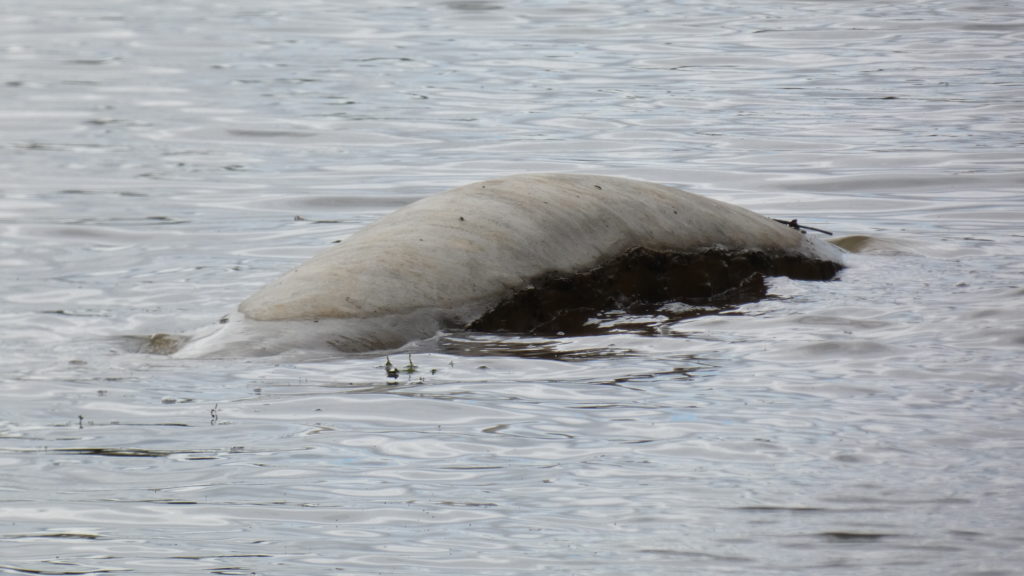
Well, actually it’s the parapet of the bridge, the surface of which was just too deep to want to walk on but too shallow for the boat to go over. And with the wind, and a work meeting coming up, I decided I’d done enough for one day and let the wind blow me back to shore. Then I had to paddle out again to close the gate, which is tricky from a coracle.
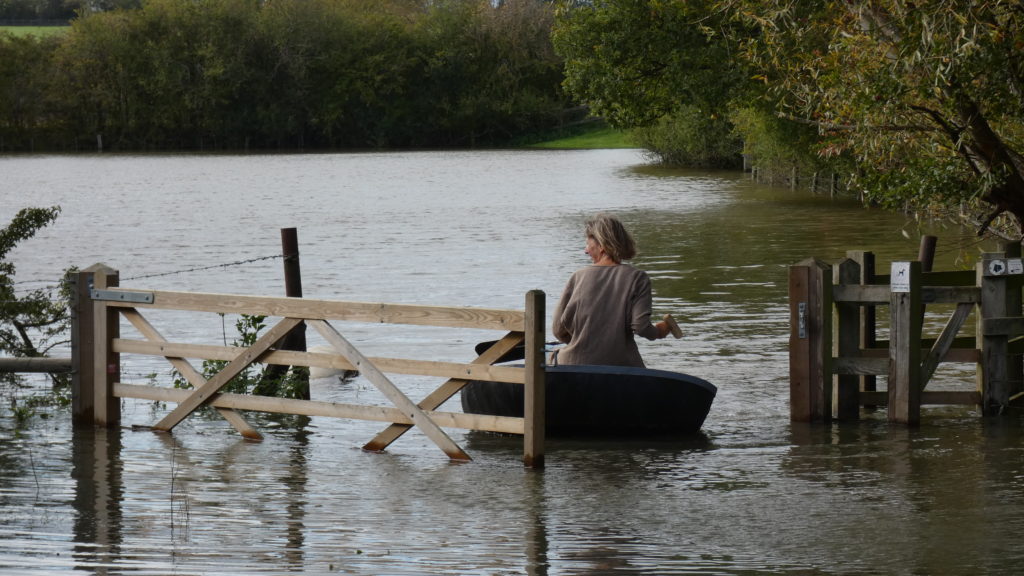
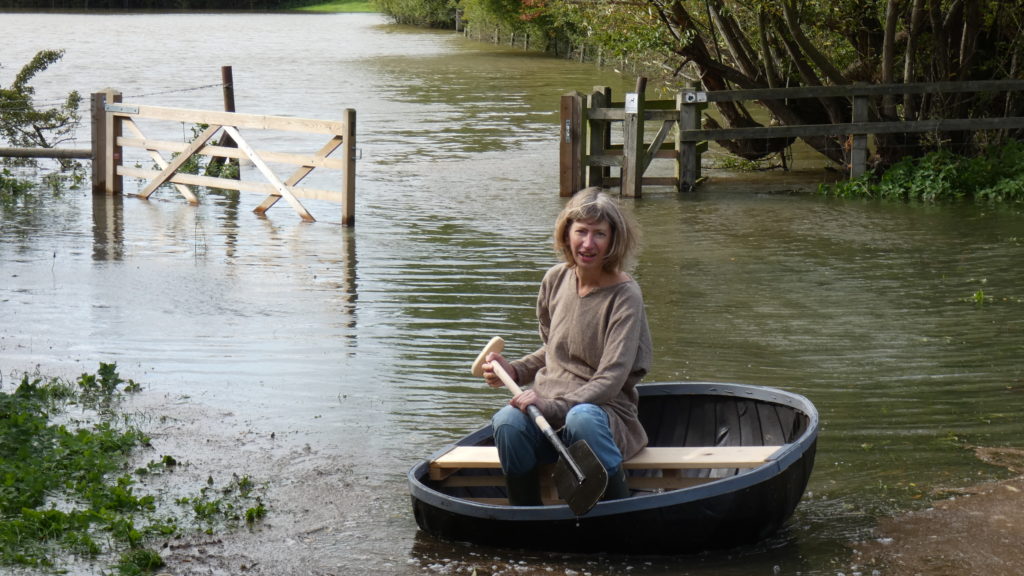
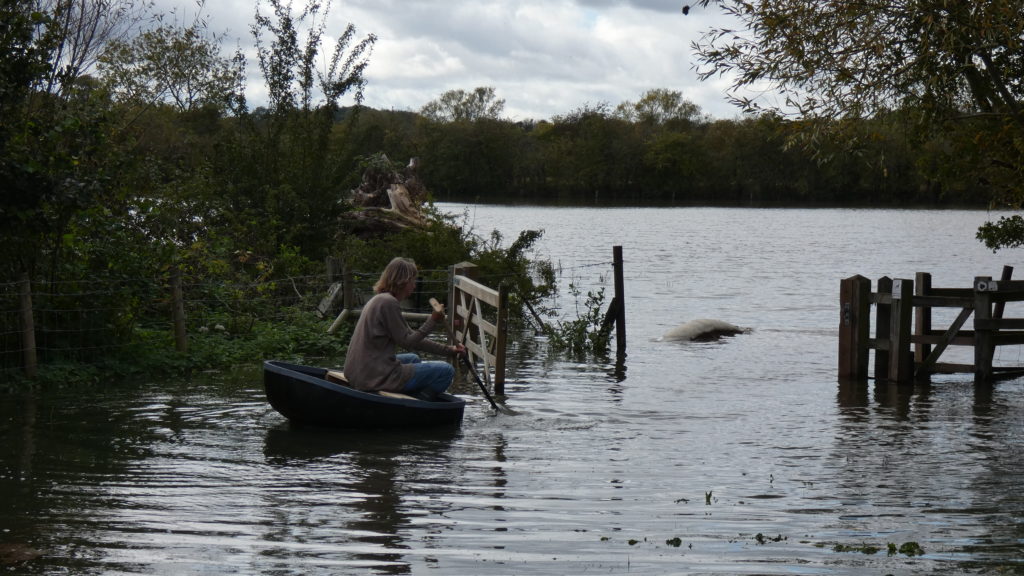
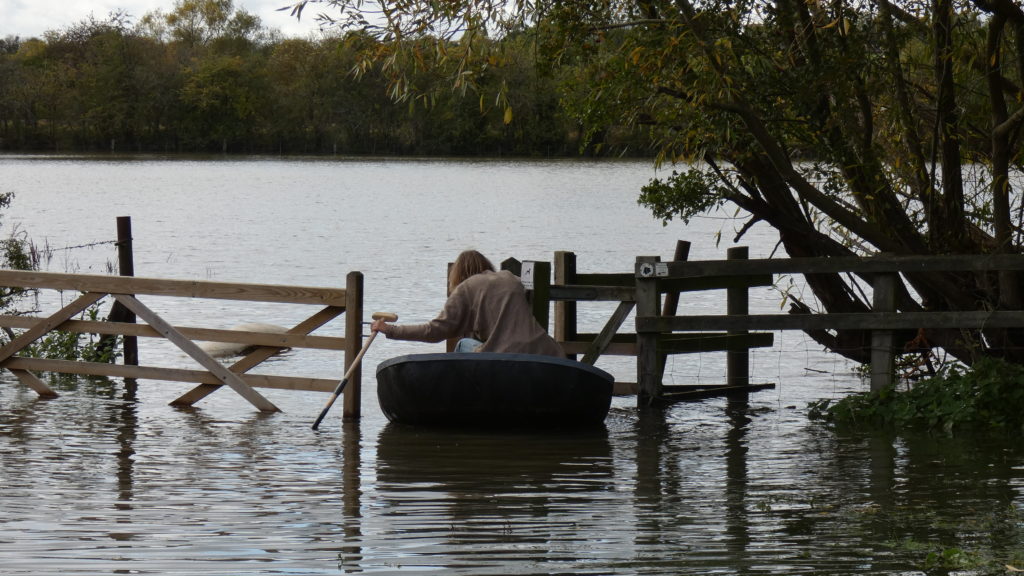
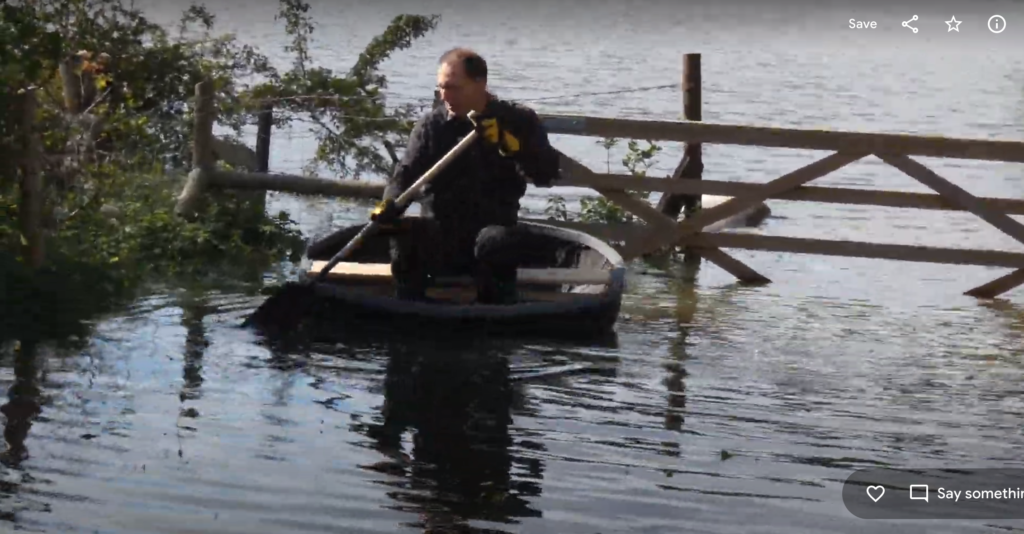
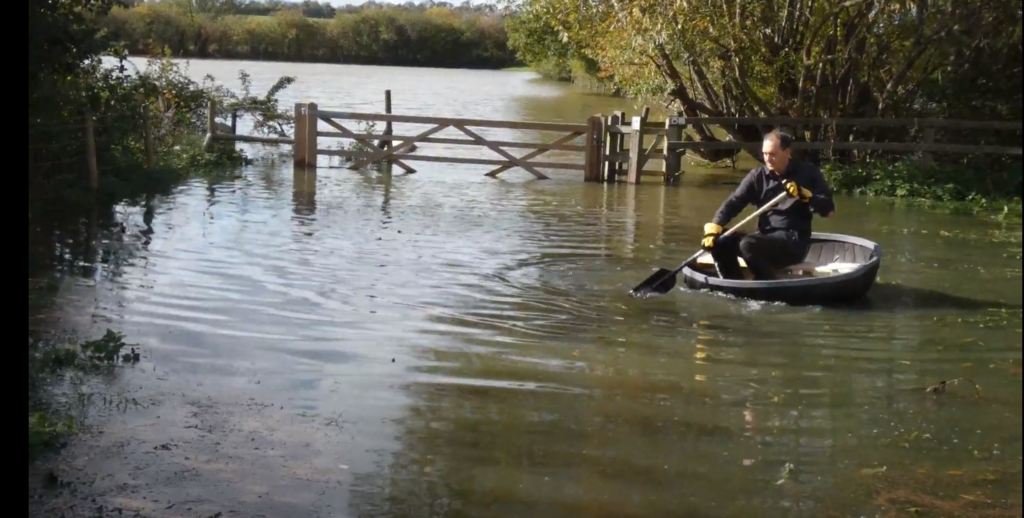
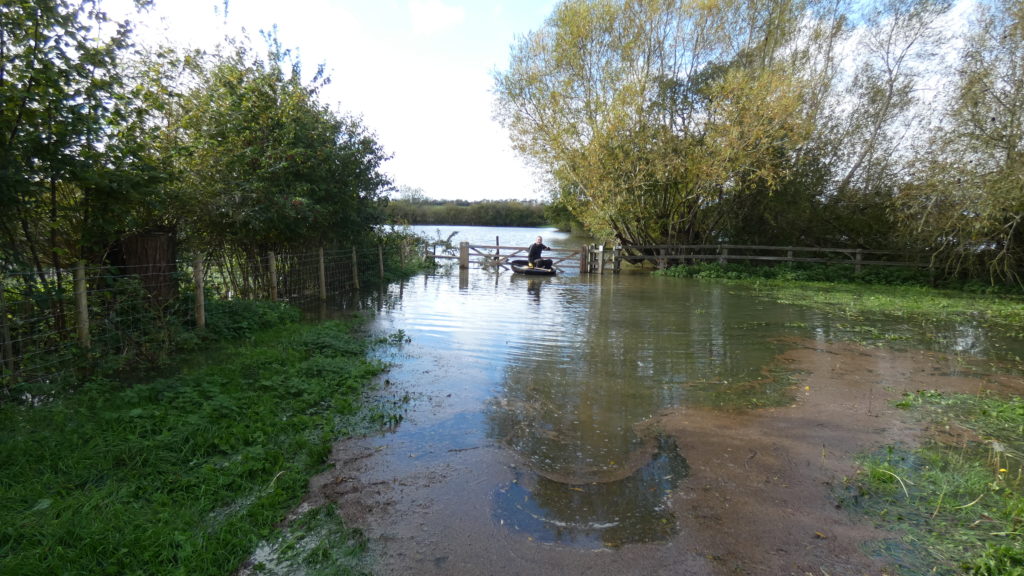
The paddle looks like it’s cracked and been bodged up with gaffer tape, so we should make a new one – probably using a spare spear shaft. The paddle is invaluable for pushing along where the water is too deep to paddle effectively, and also with a second paddle we could try having two (smallish) people in the boat. A pole would be a useful thing to carry, for pushing hard / punting without risking the fragile paddle.
I should probably also give her a new coat of bitumen paint. Otherwise B-BT seems sound and is a lot of fun.
So there you go! The nuns of Rumwoldstow can now go fishing. Perhaps I need a new character, some male servant or young monk who does the fishing, as I’m not keen to wear my long wool dress in the coracle.
